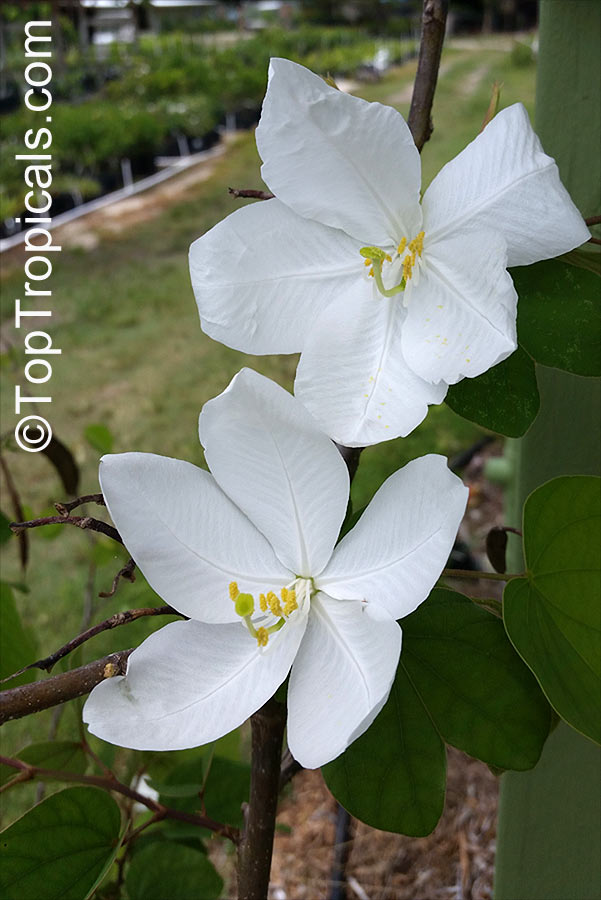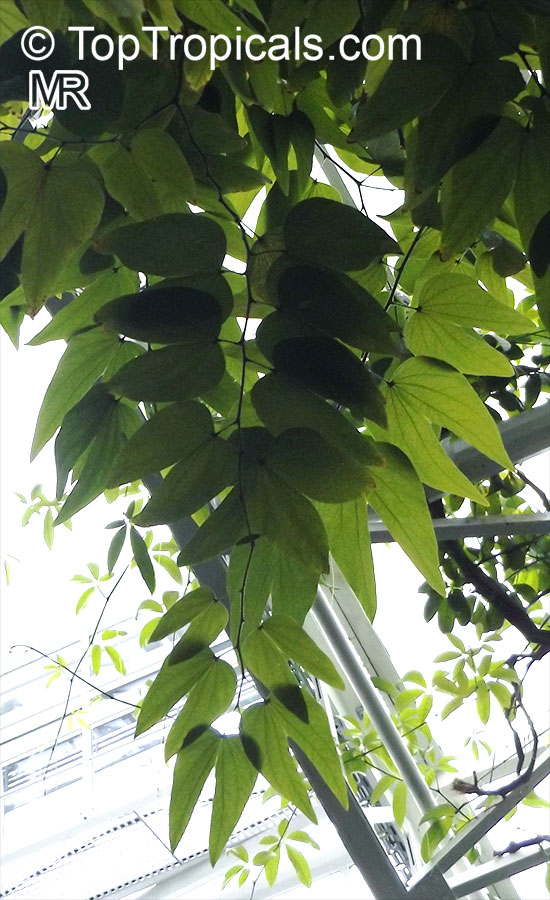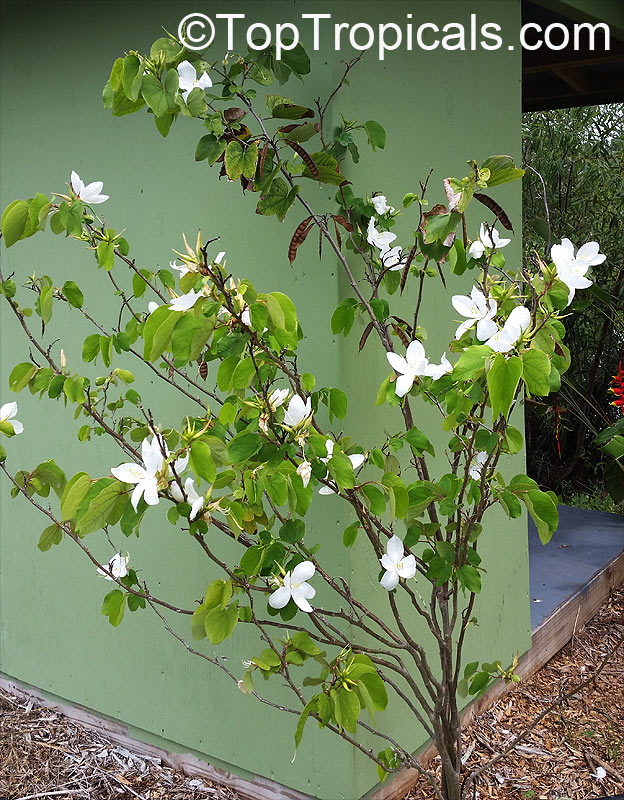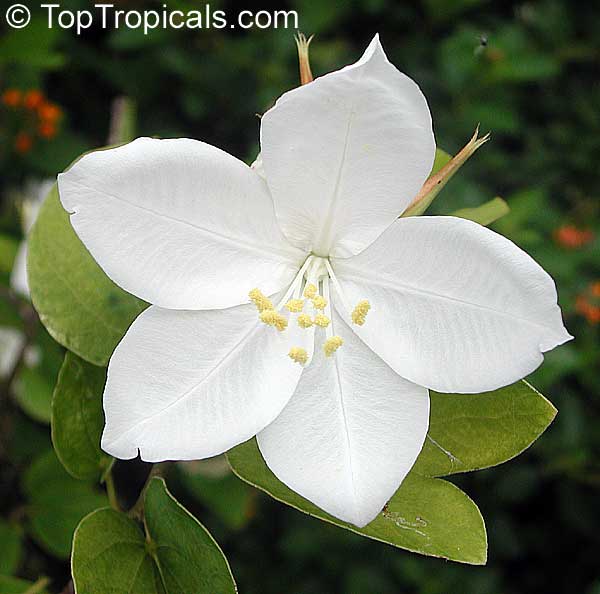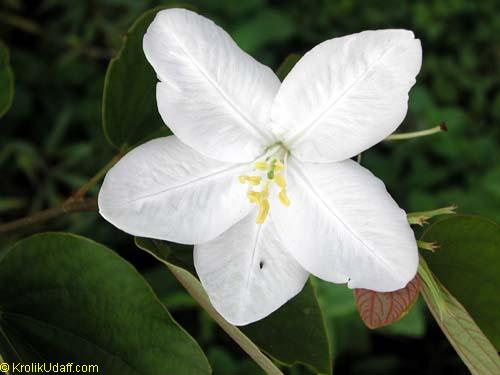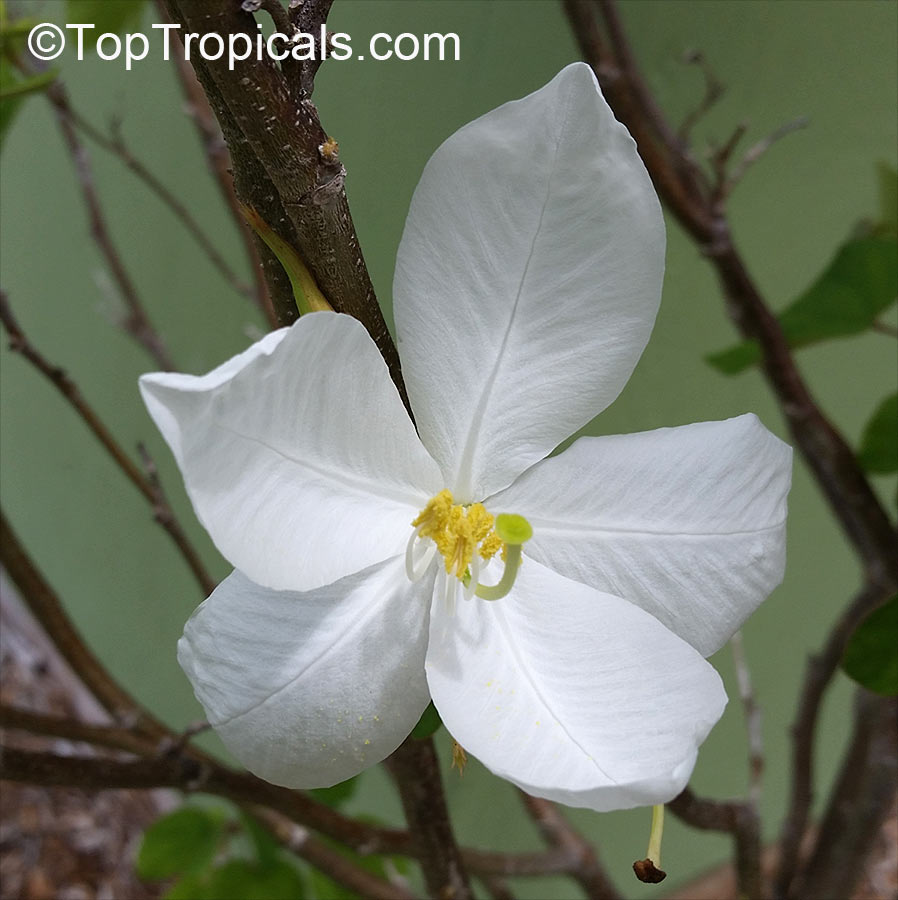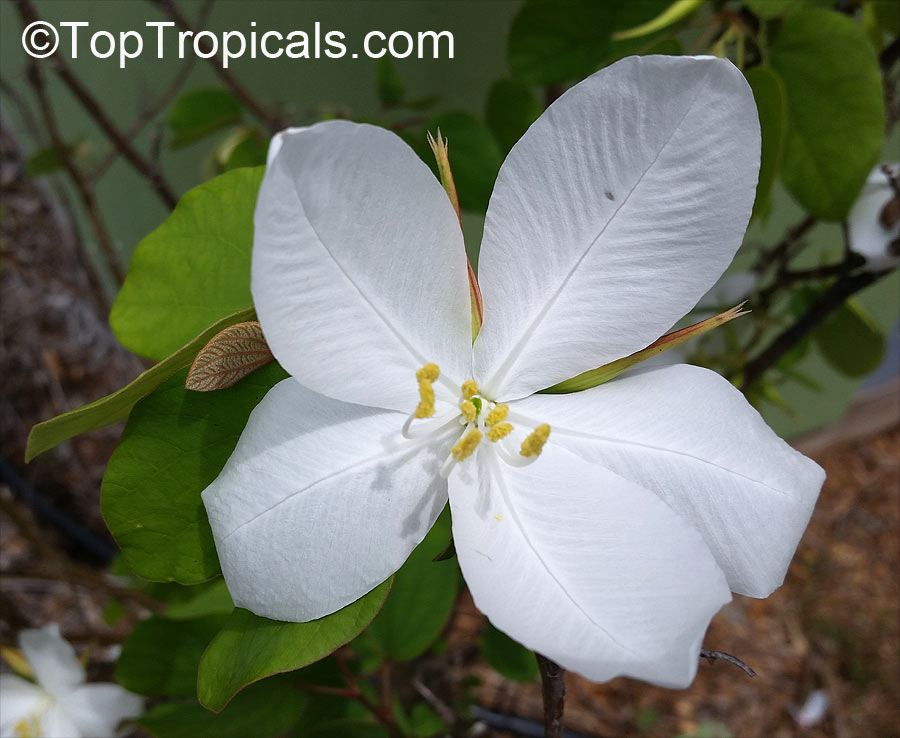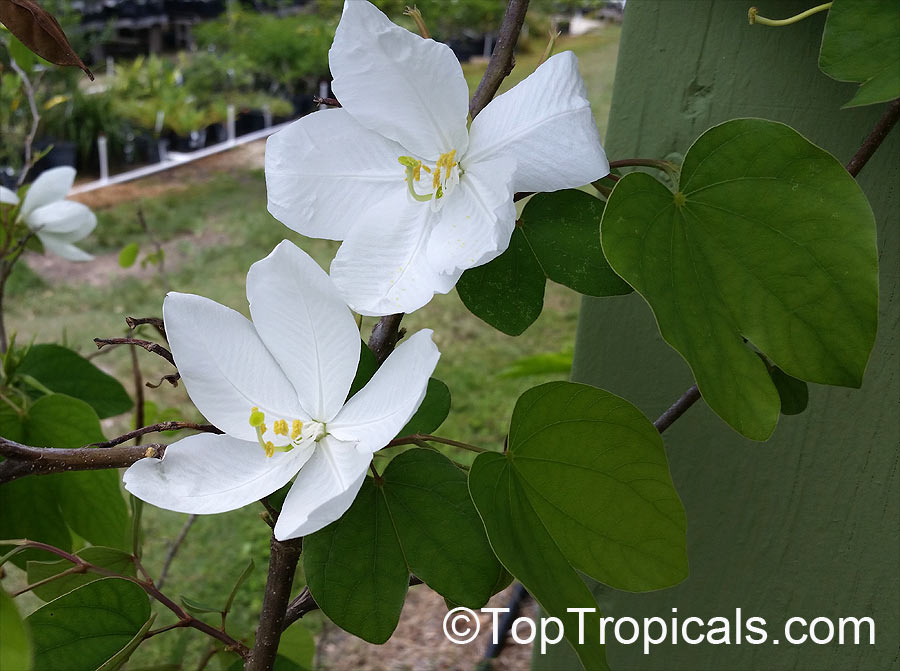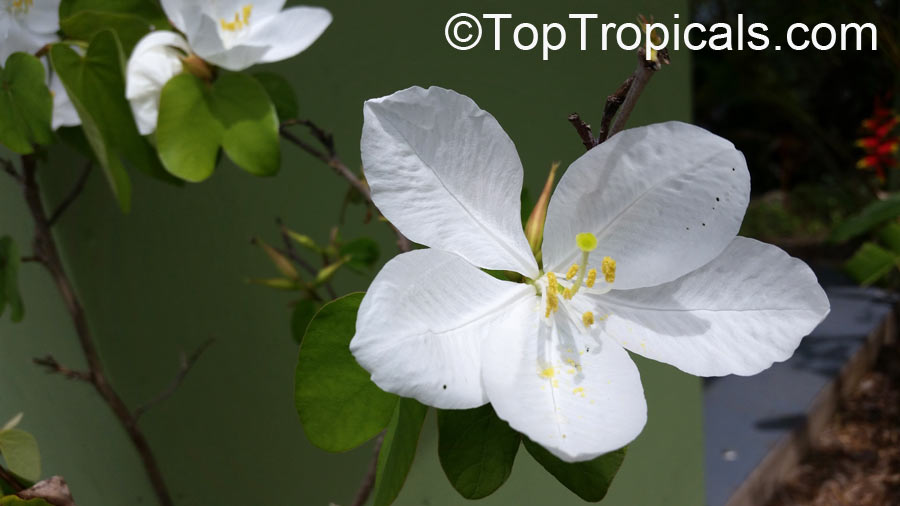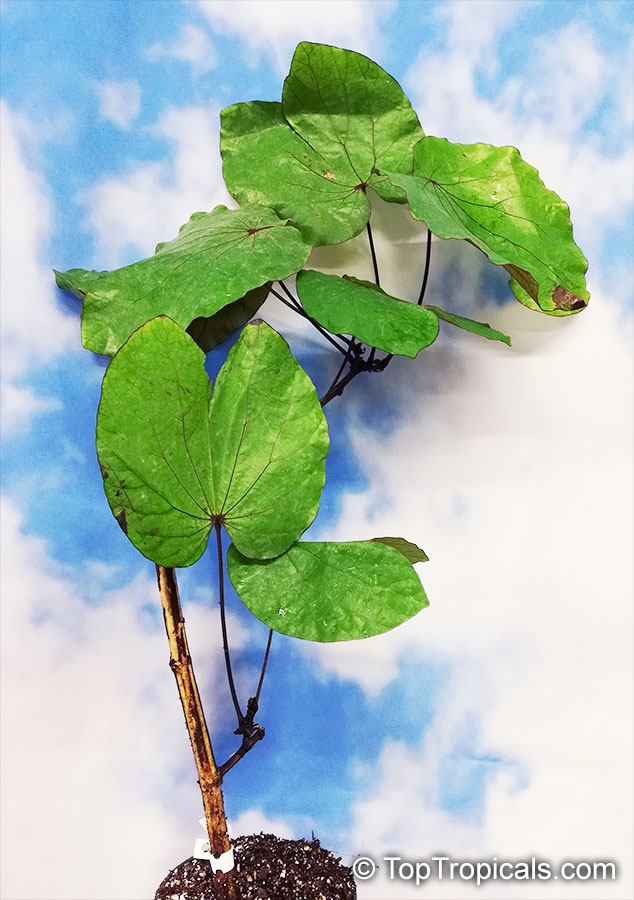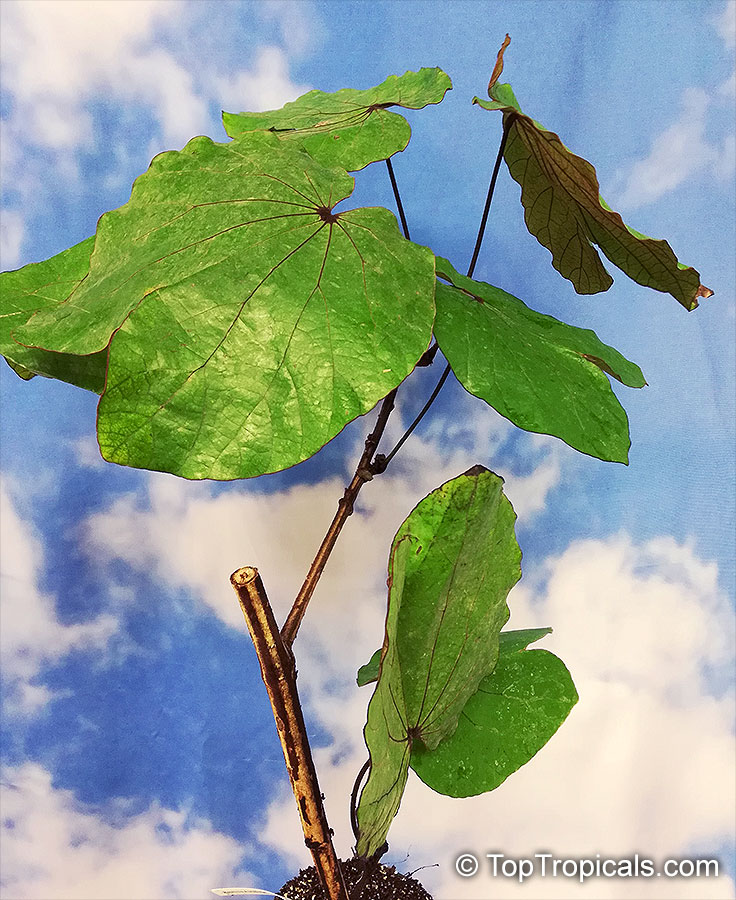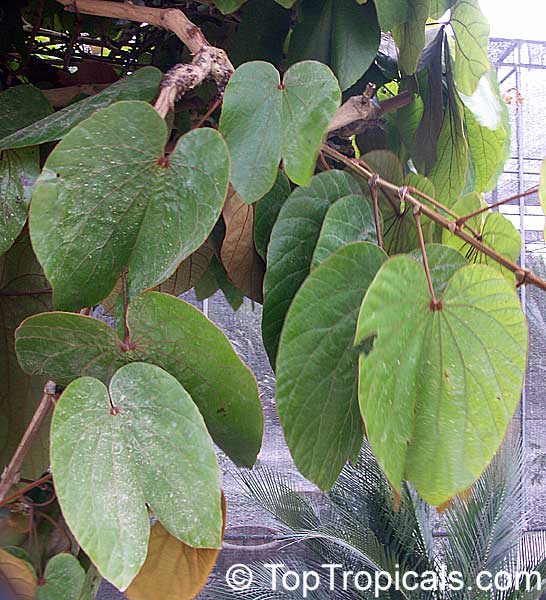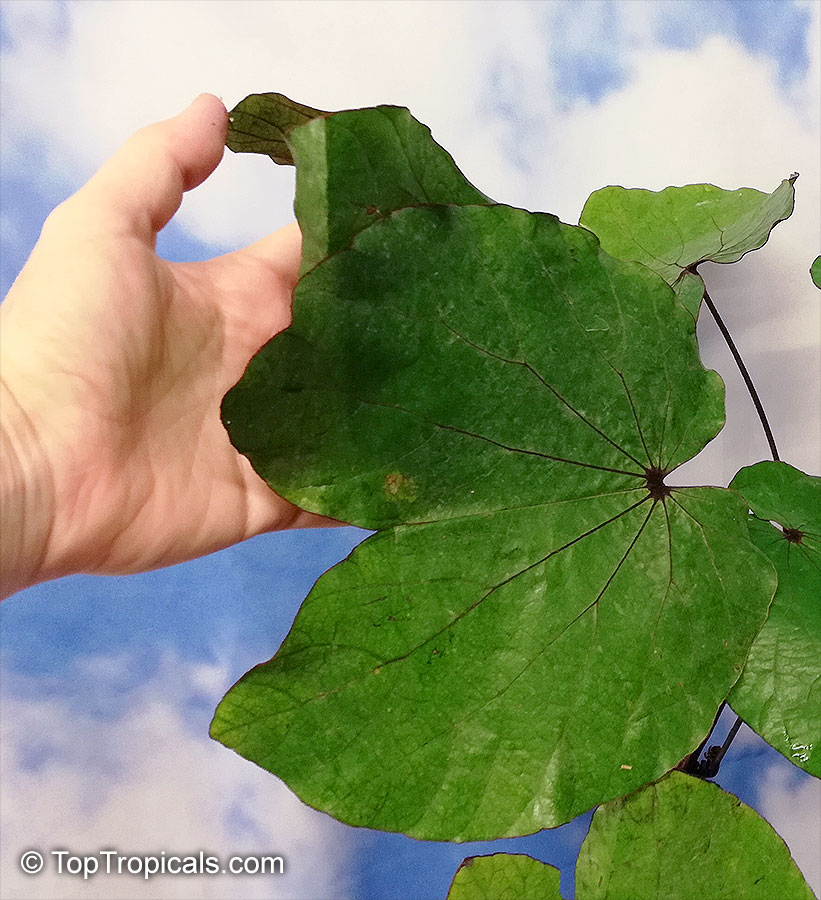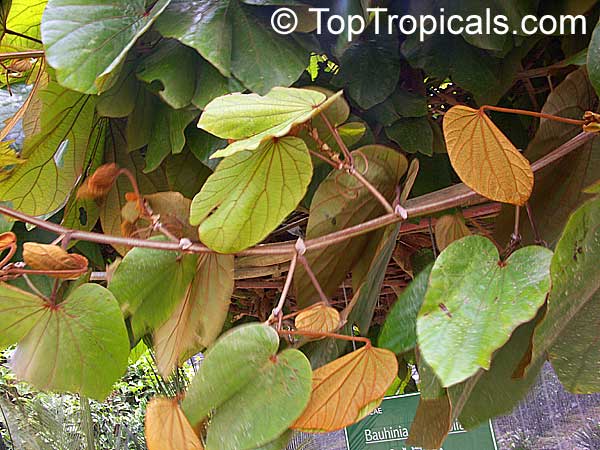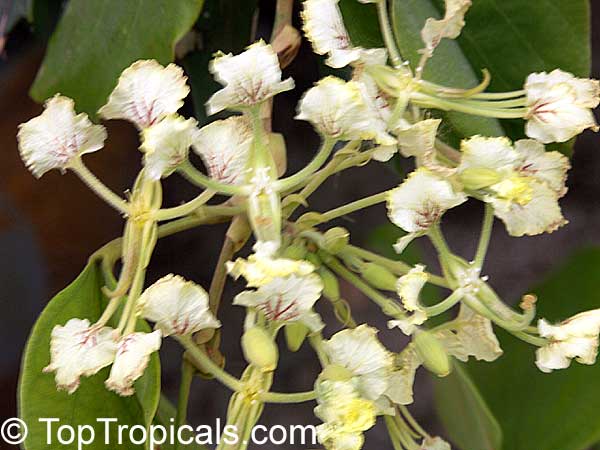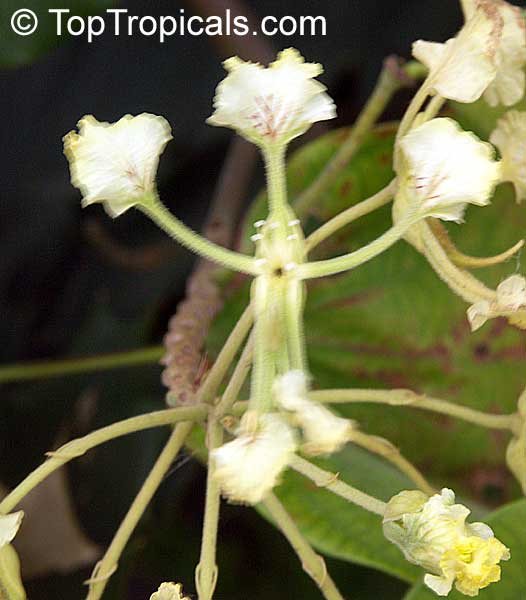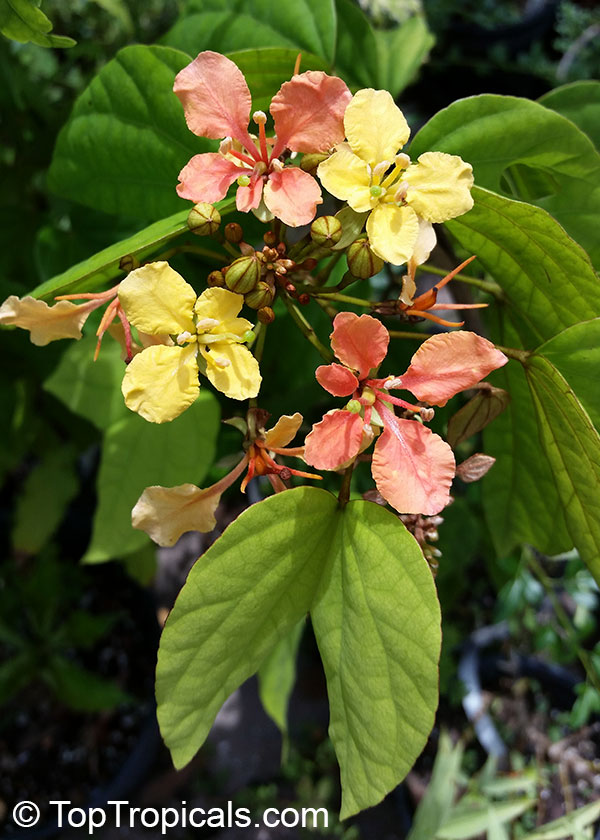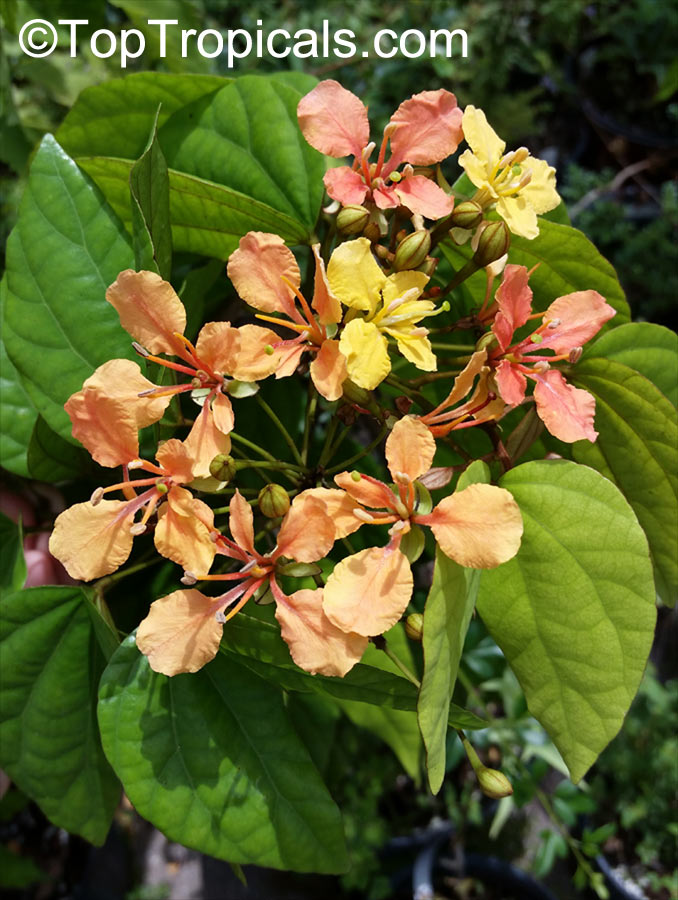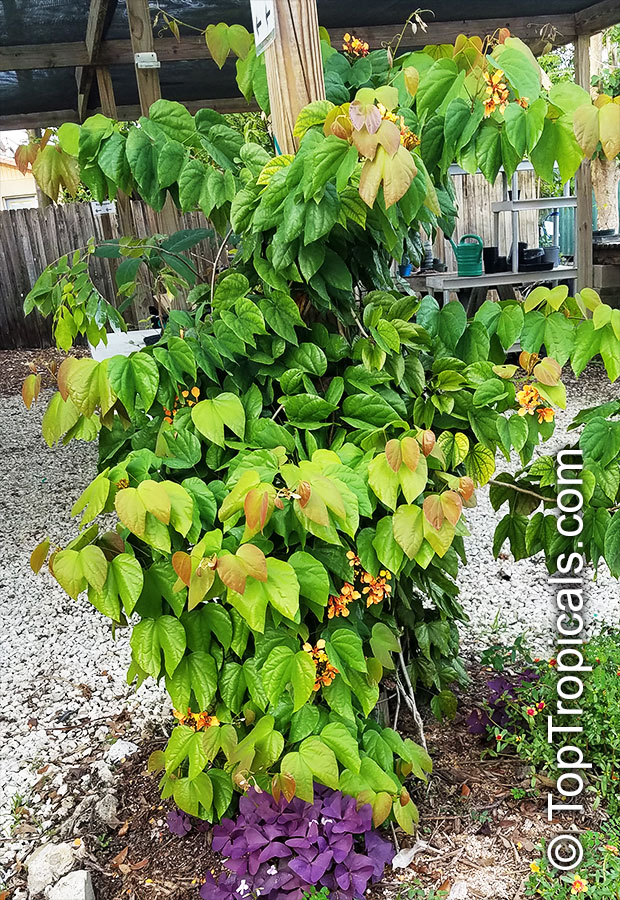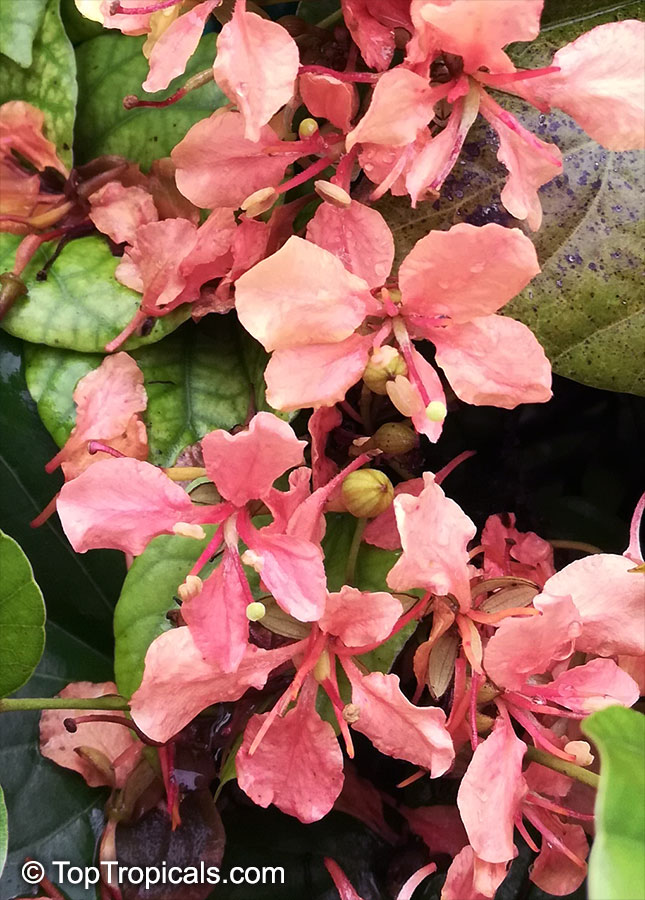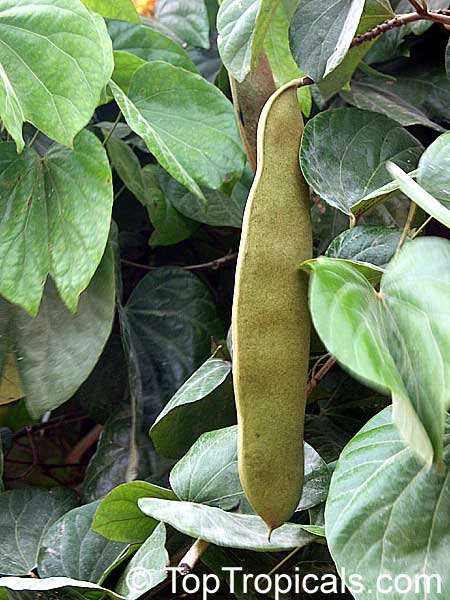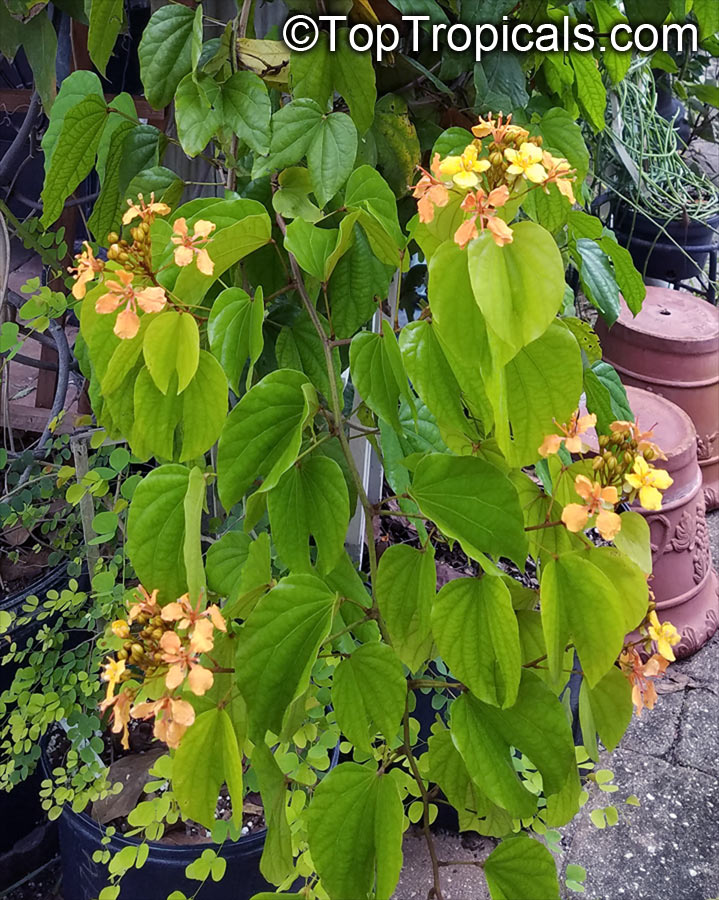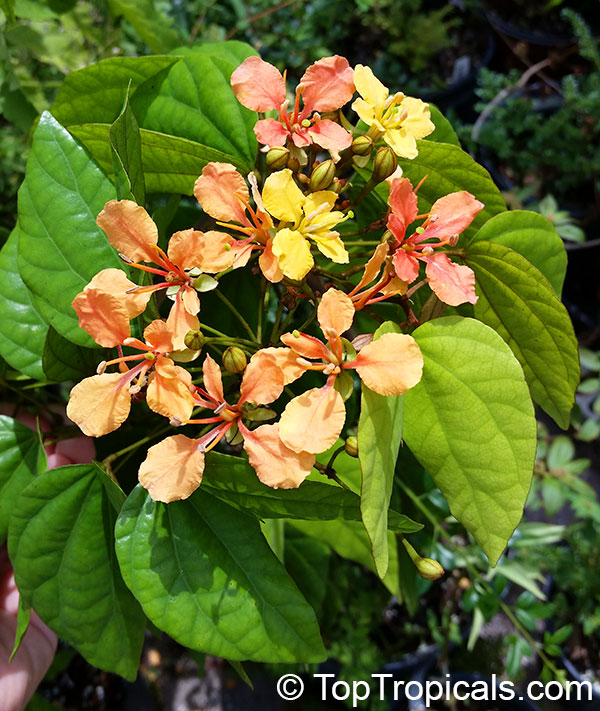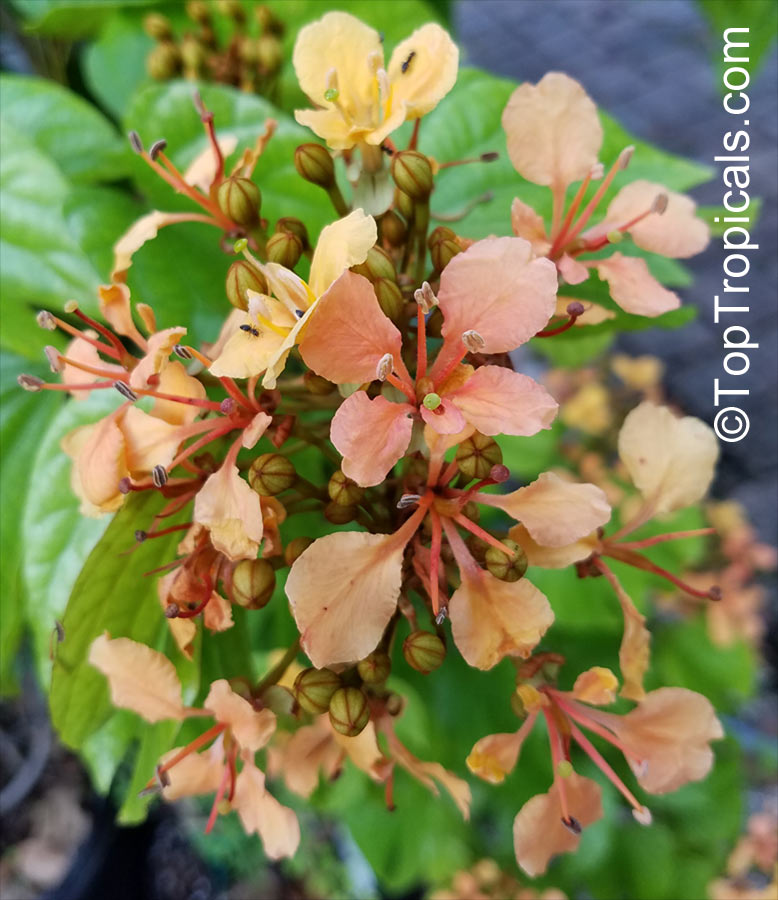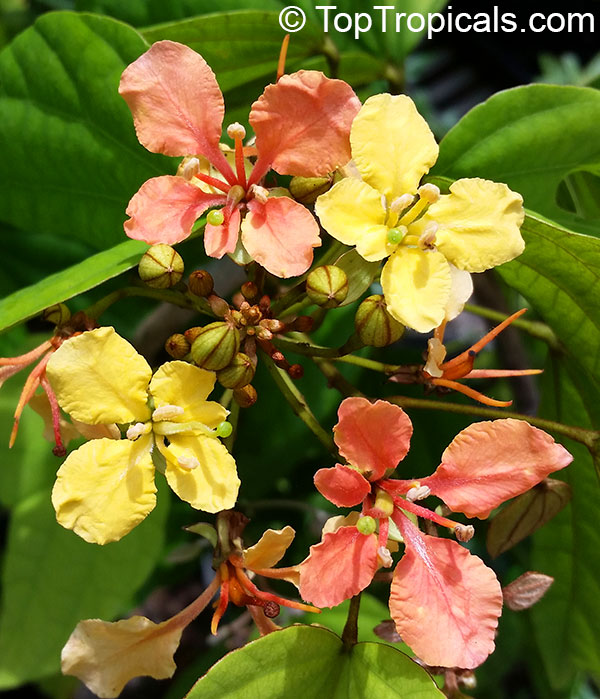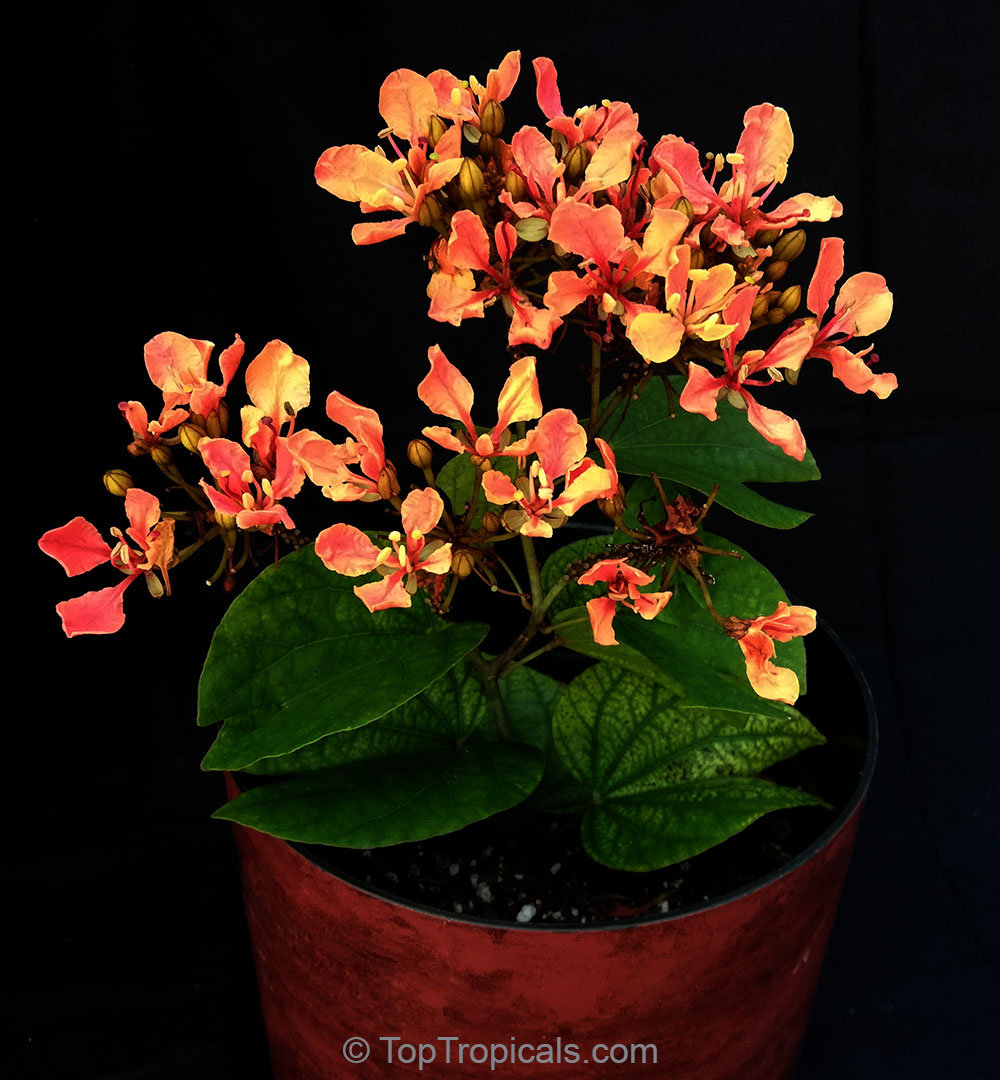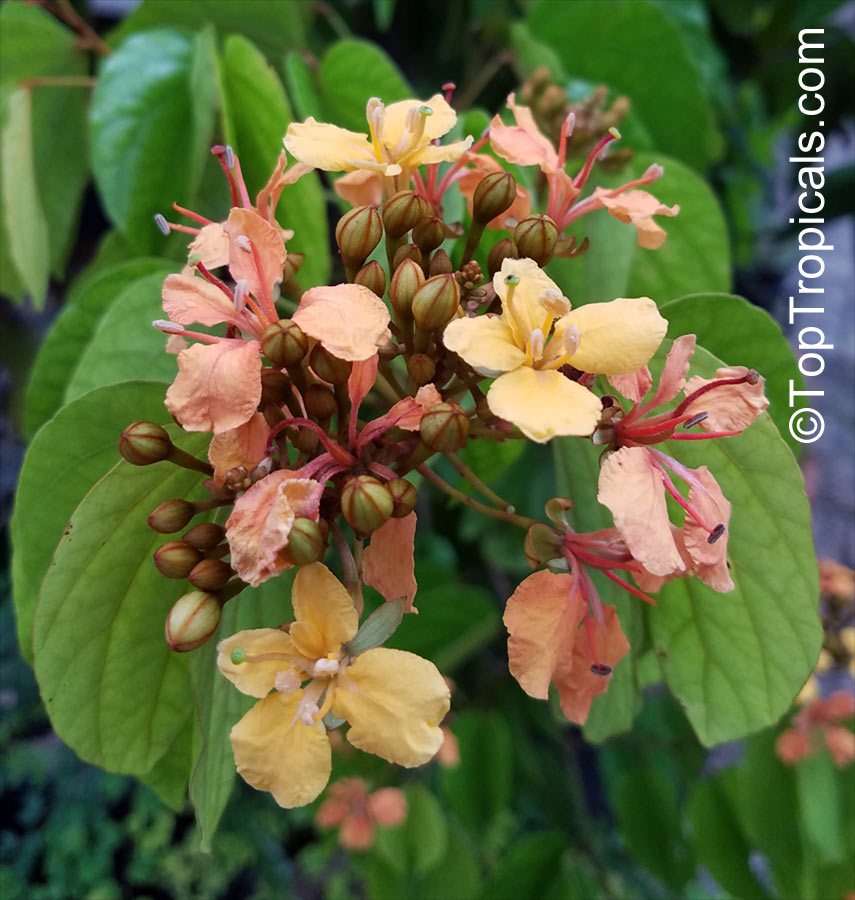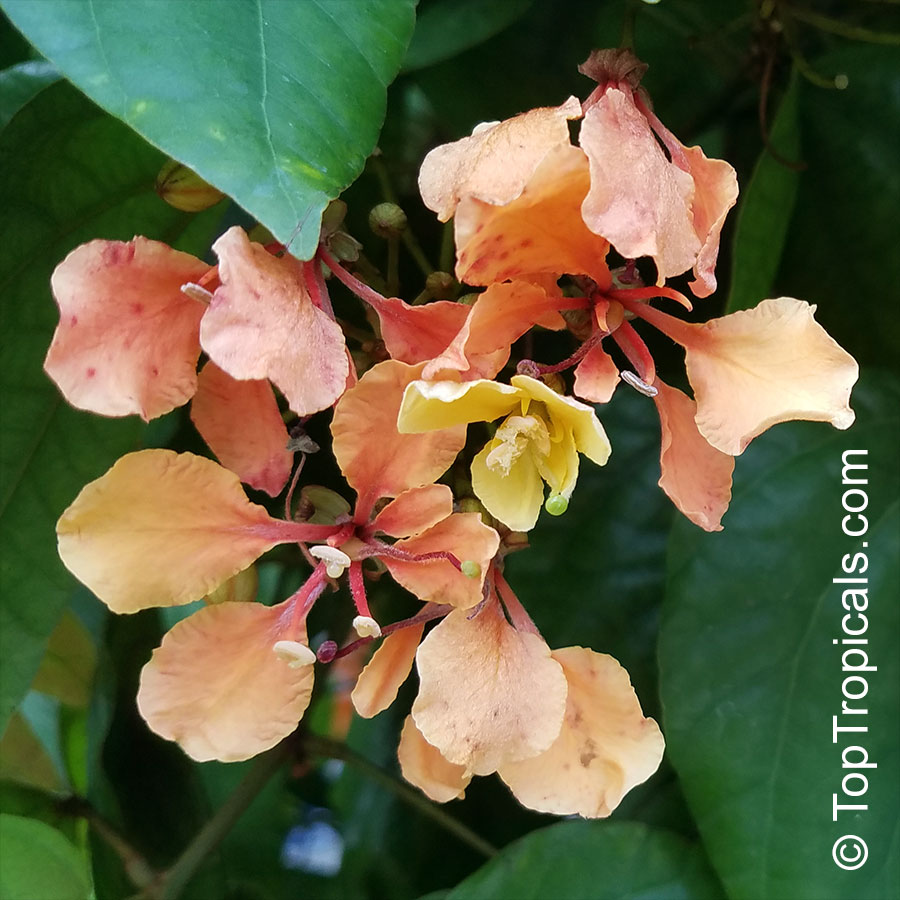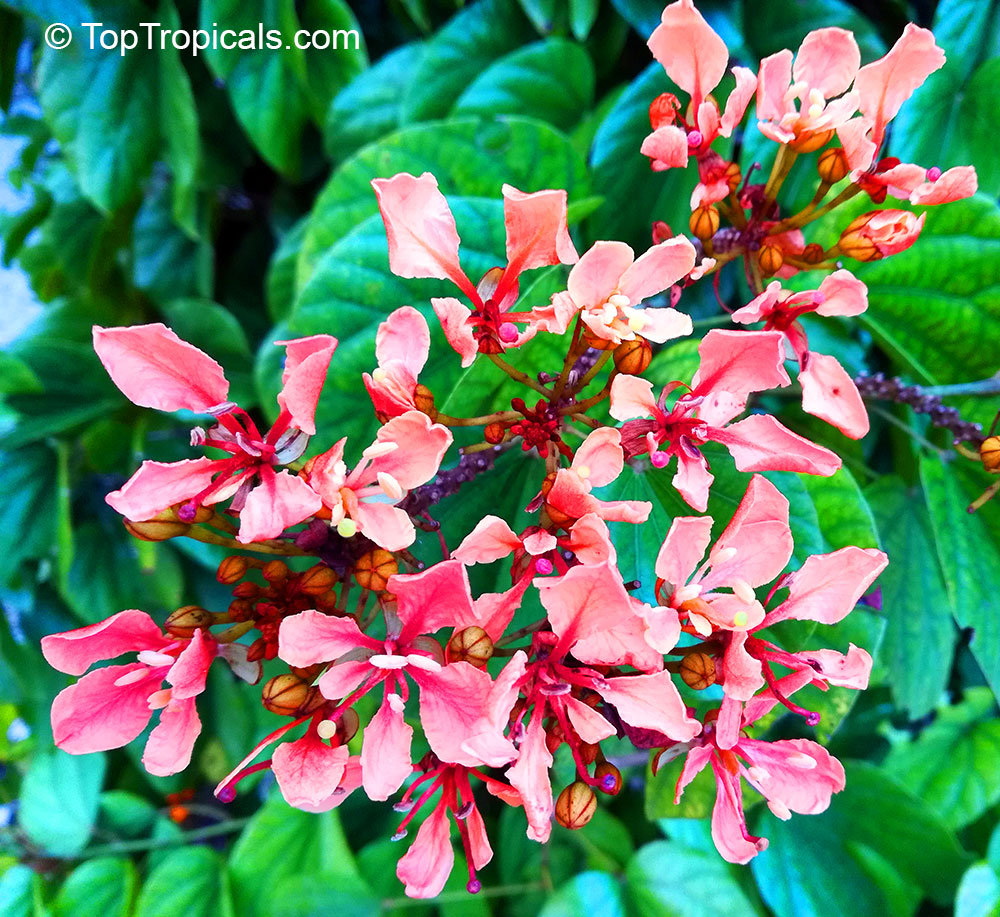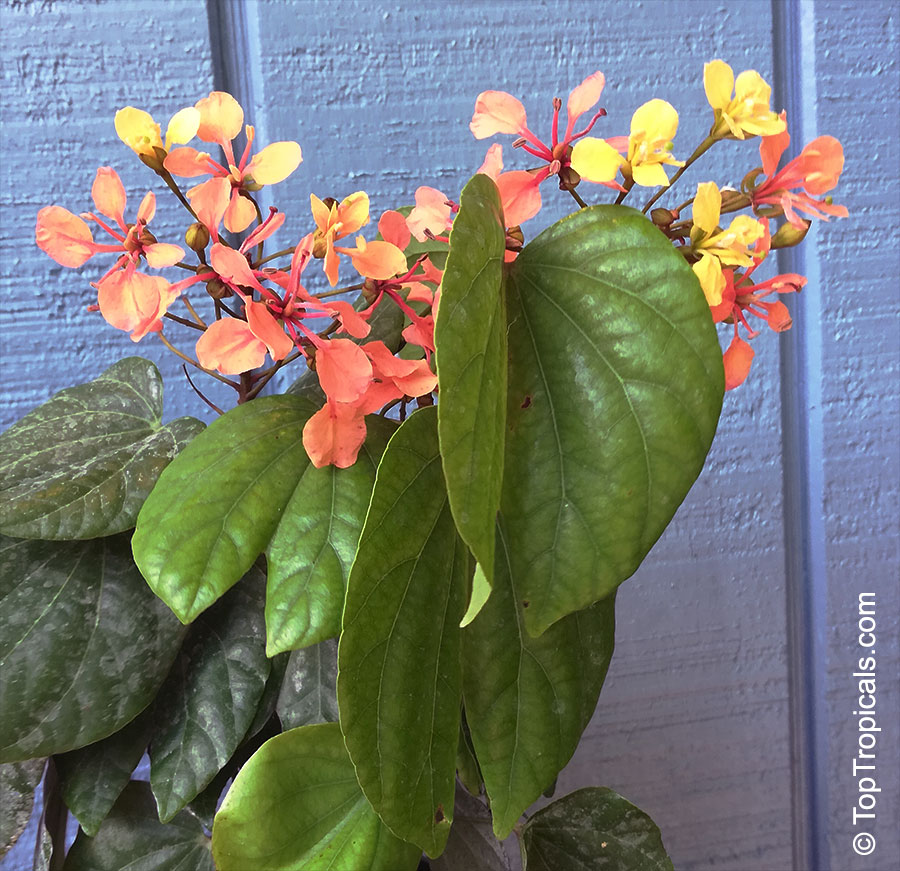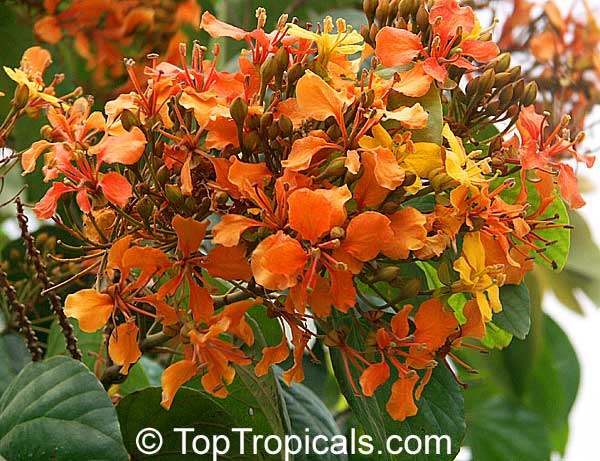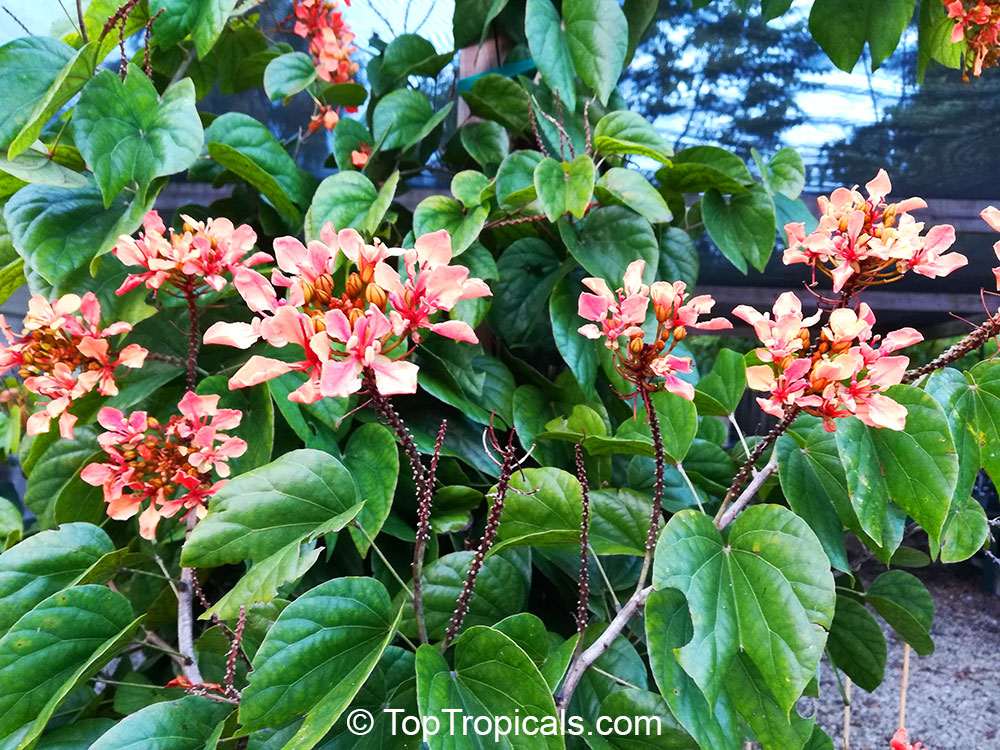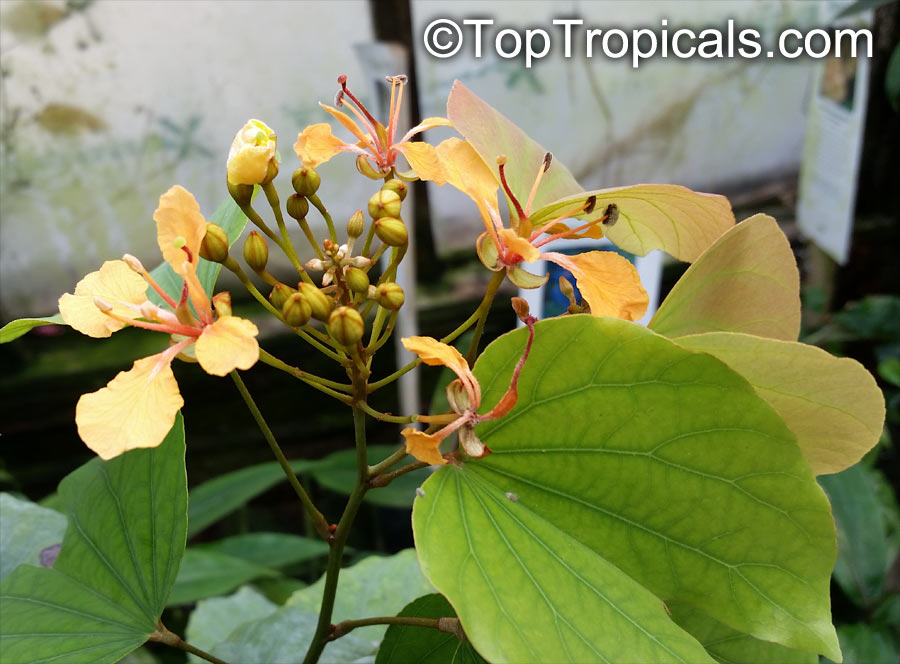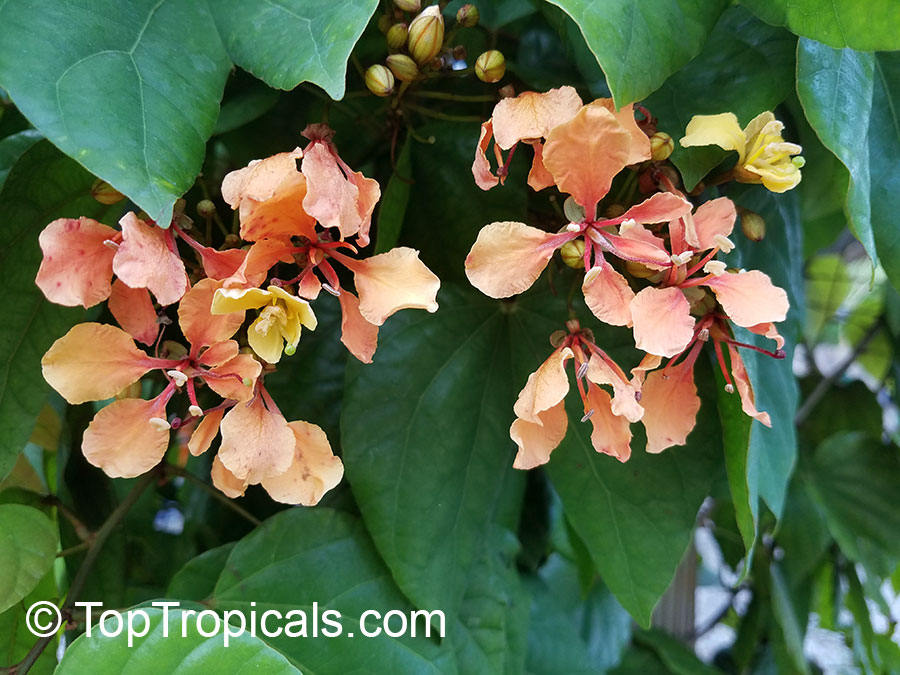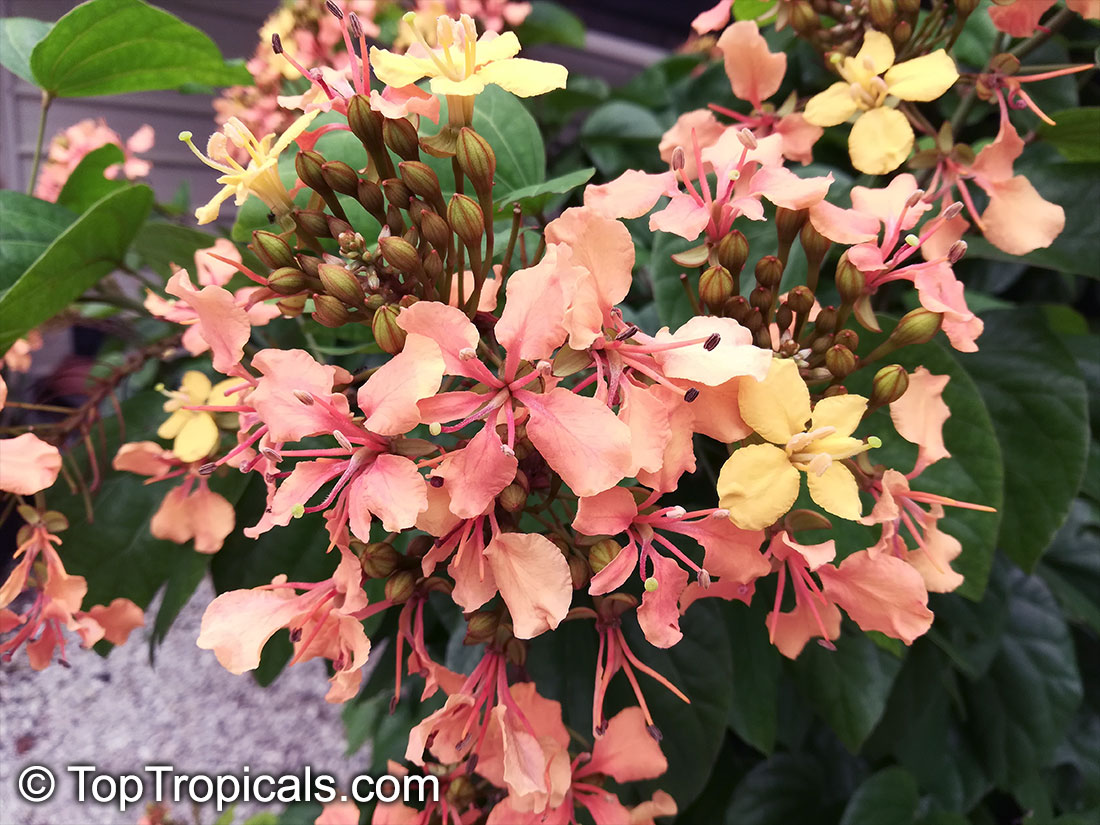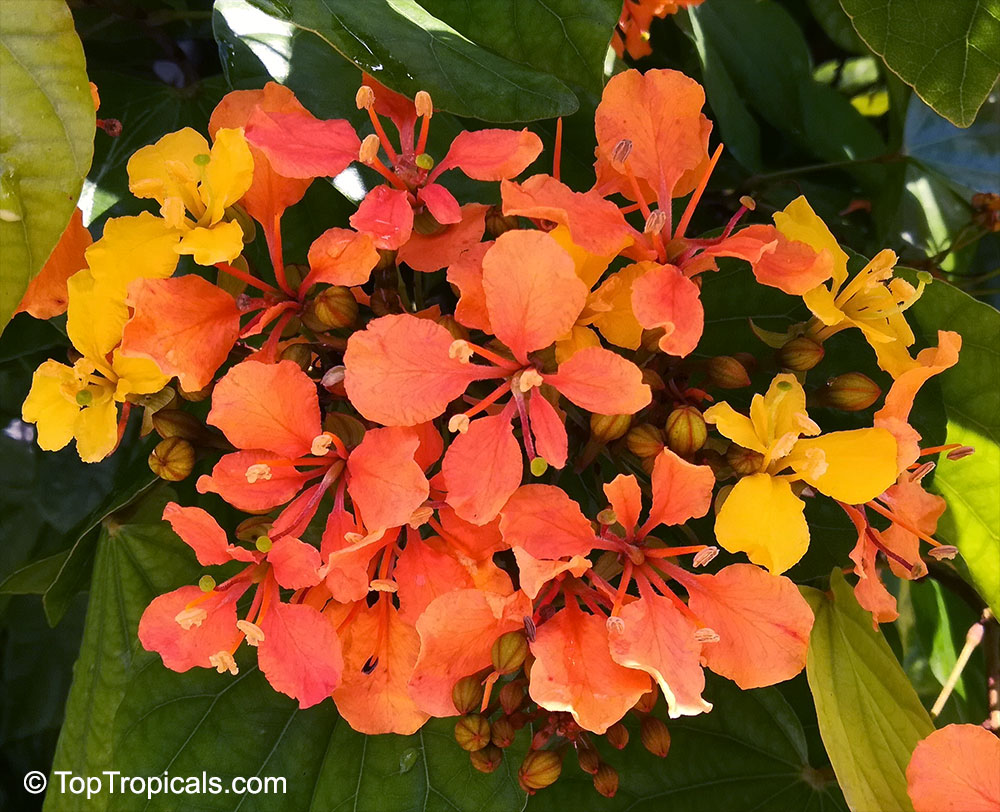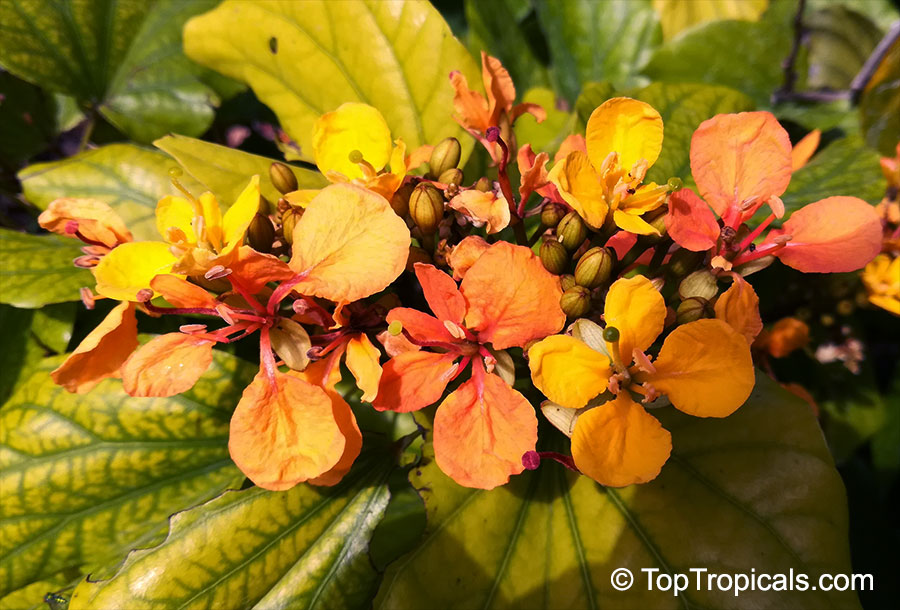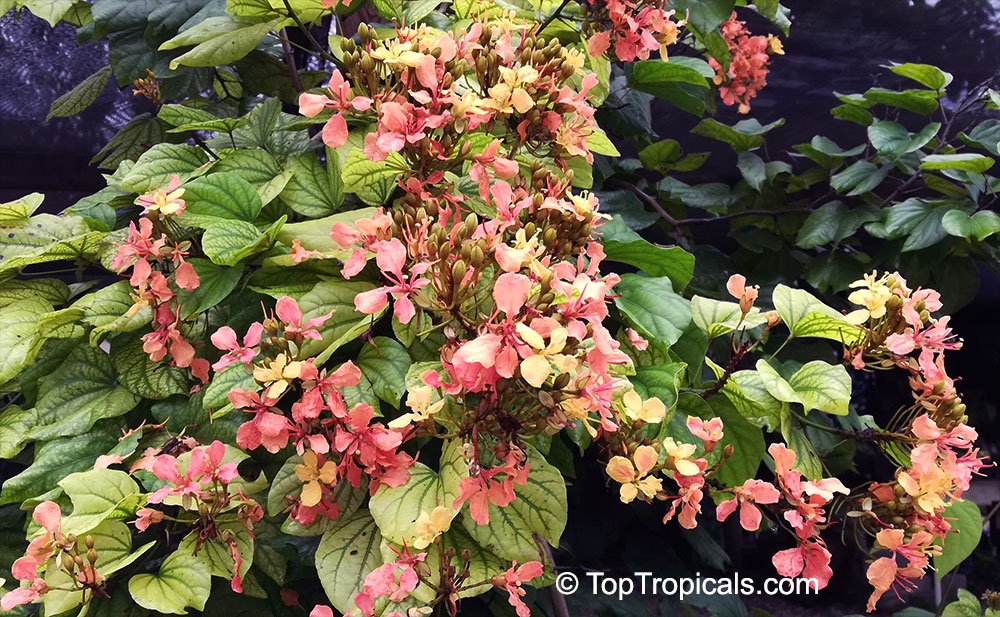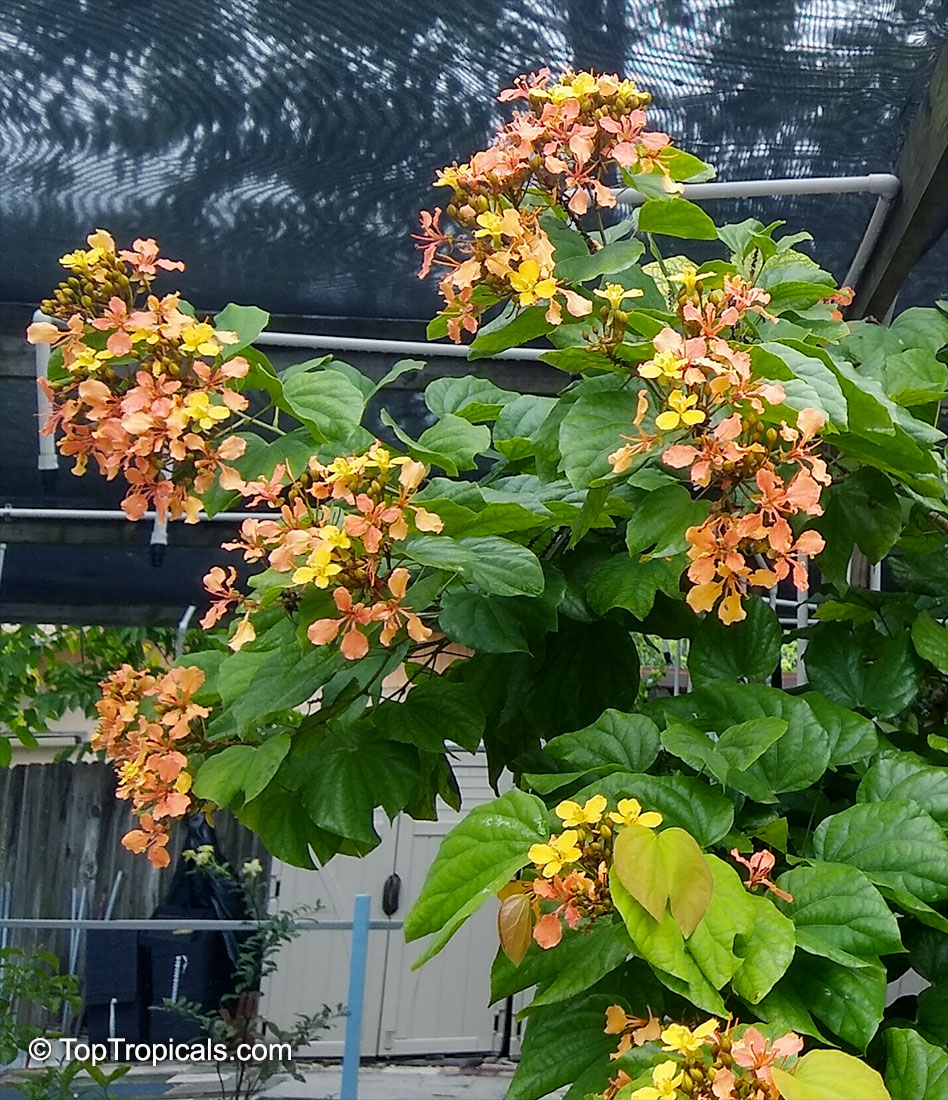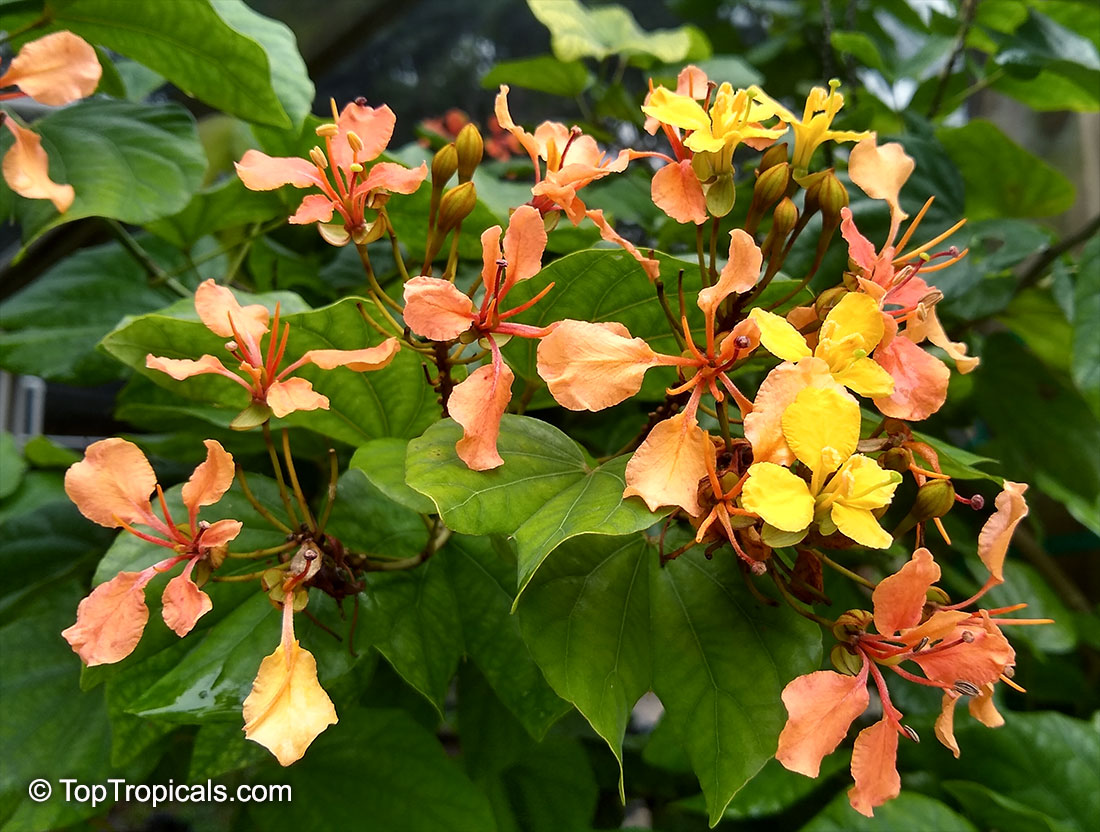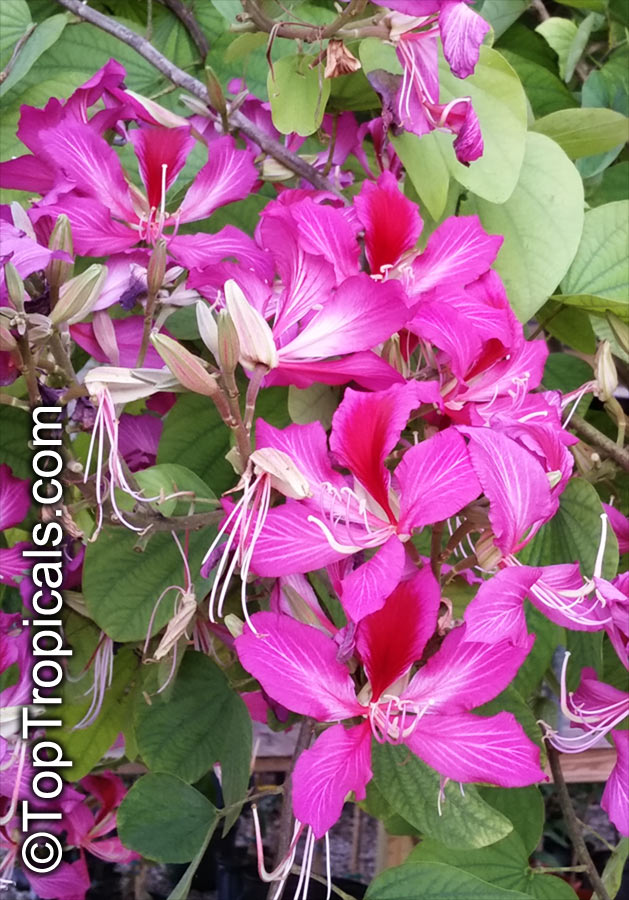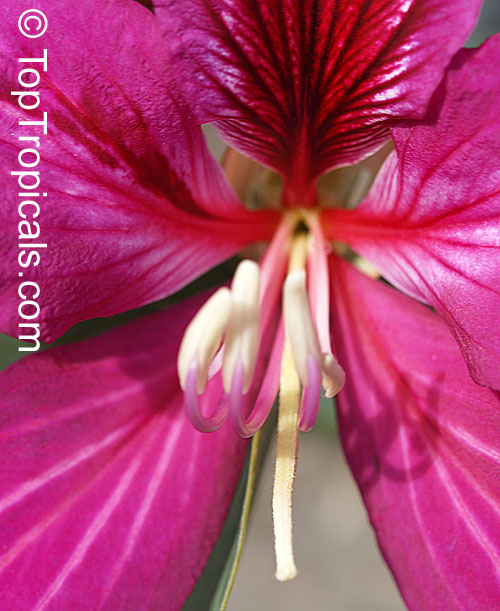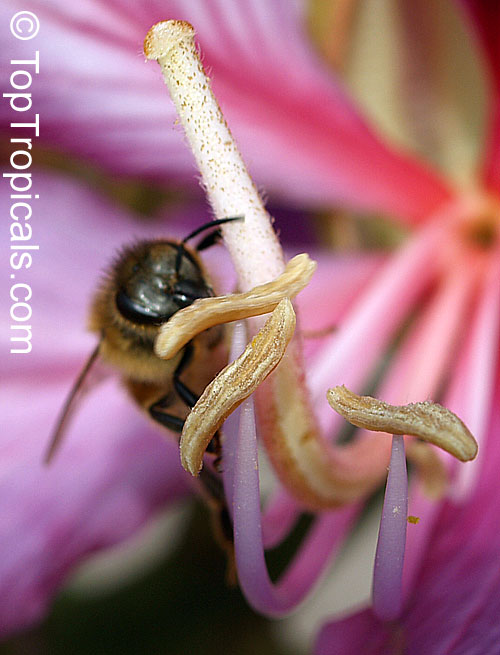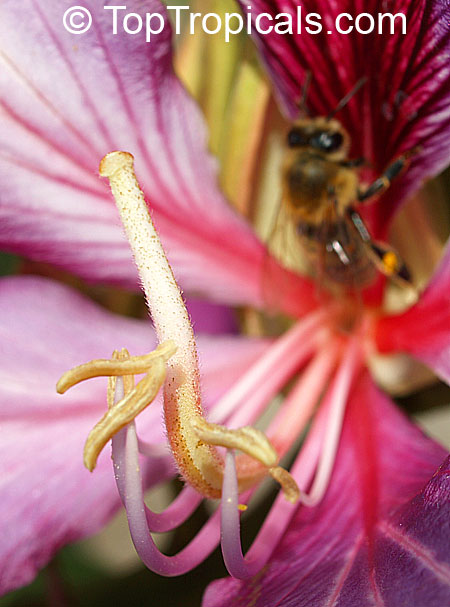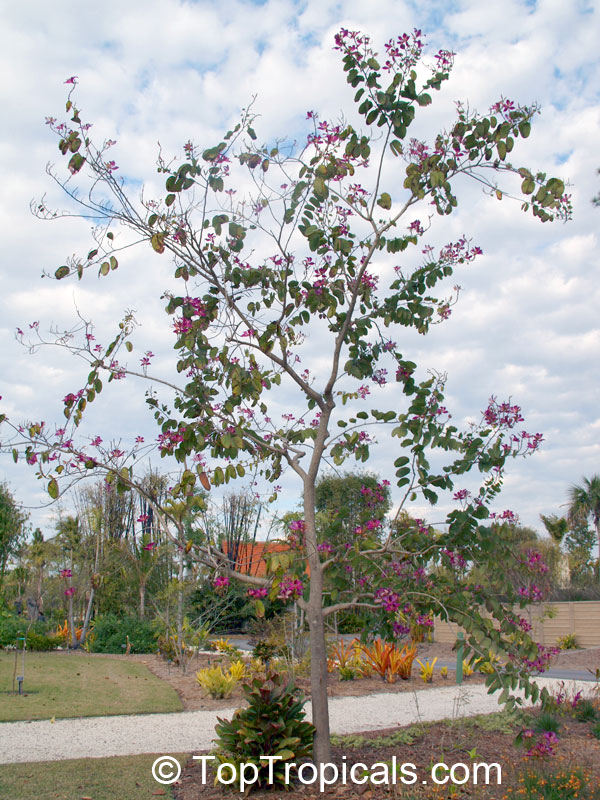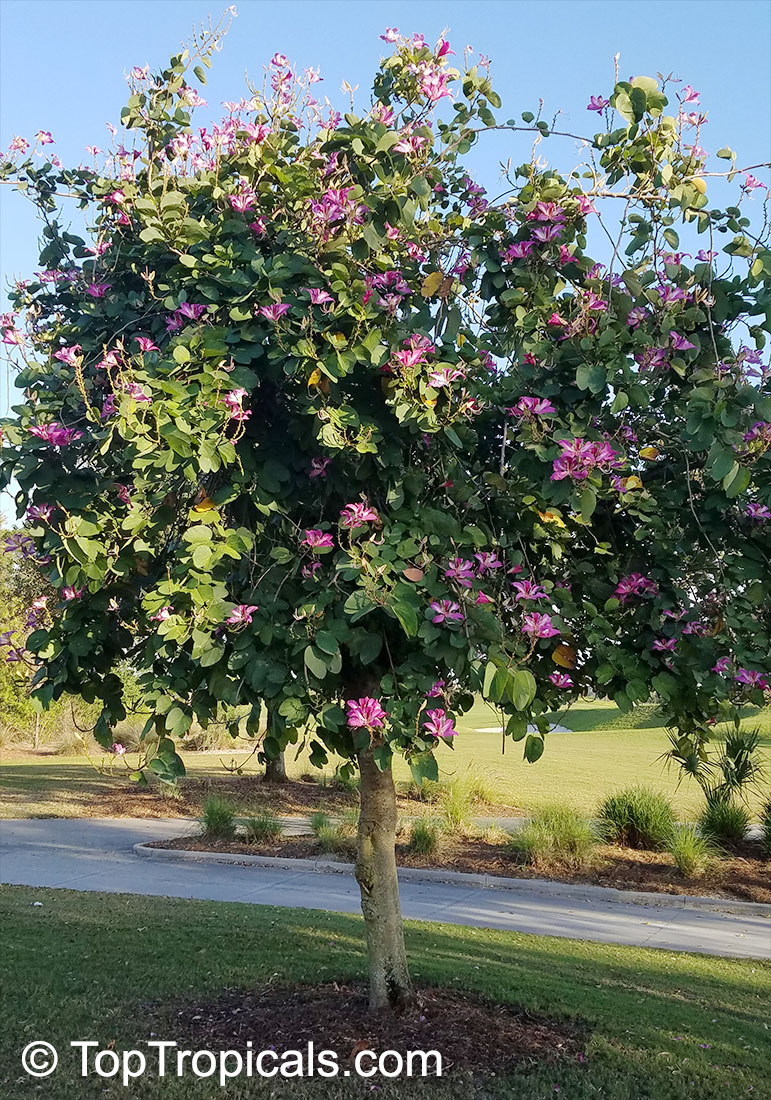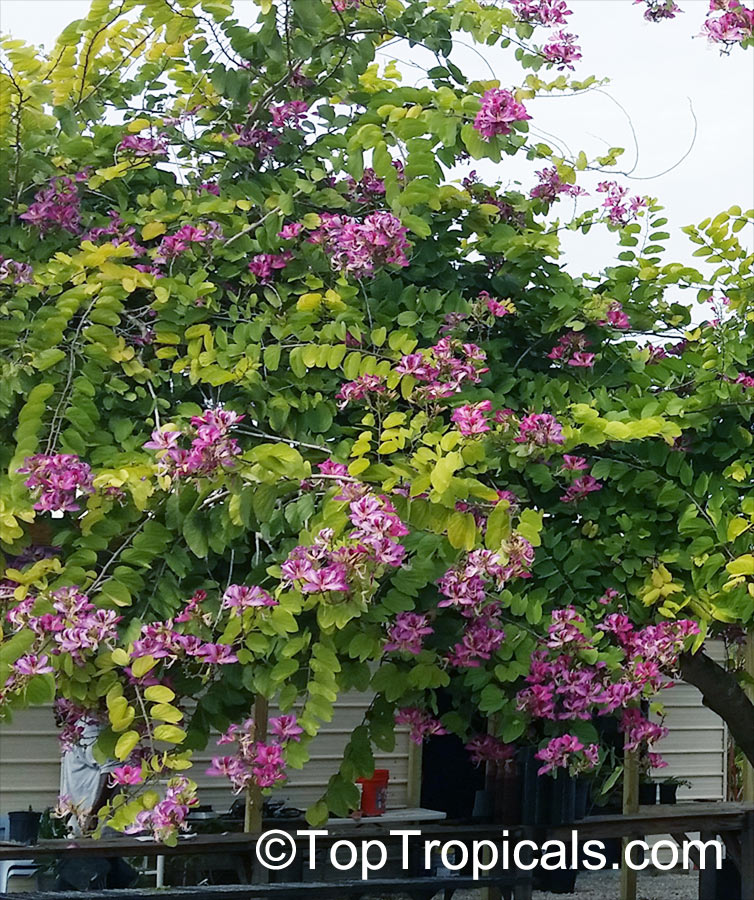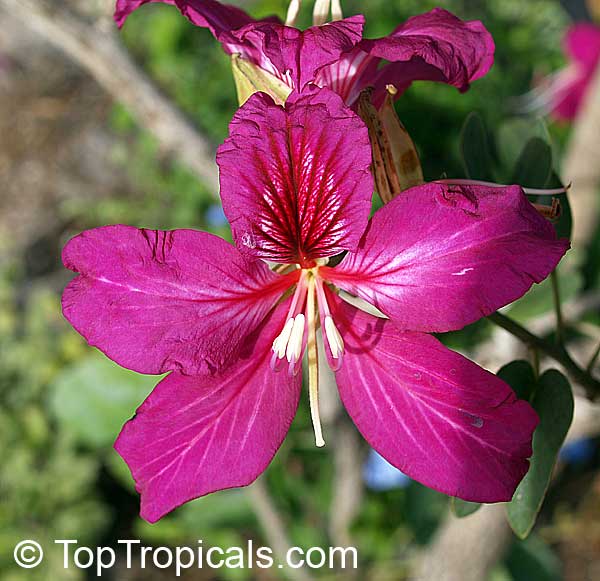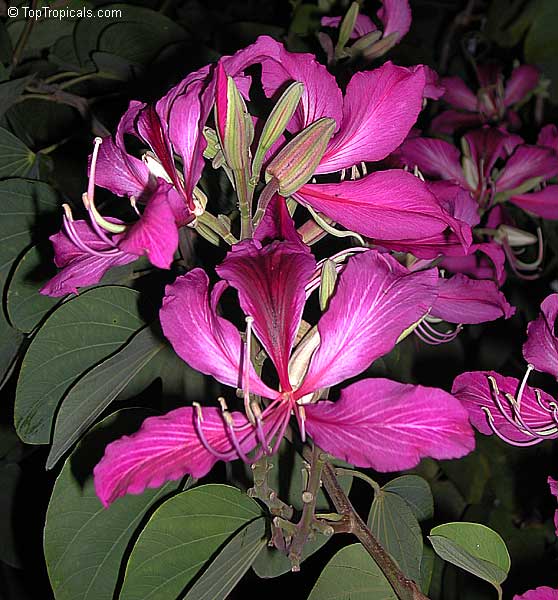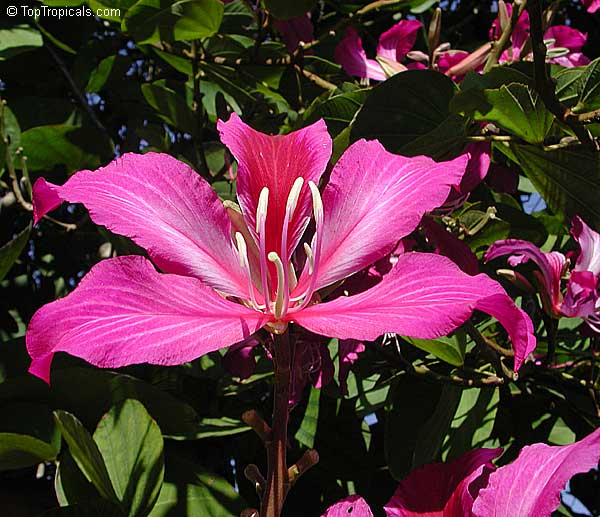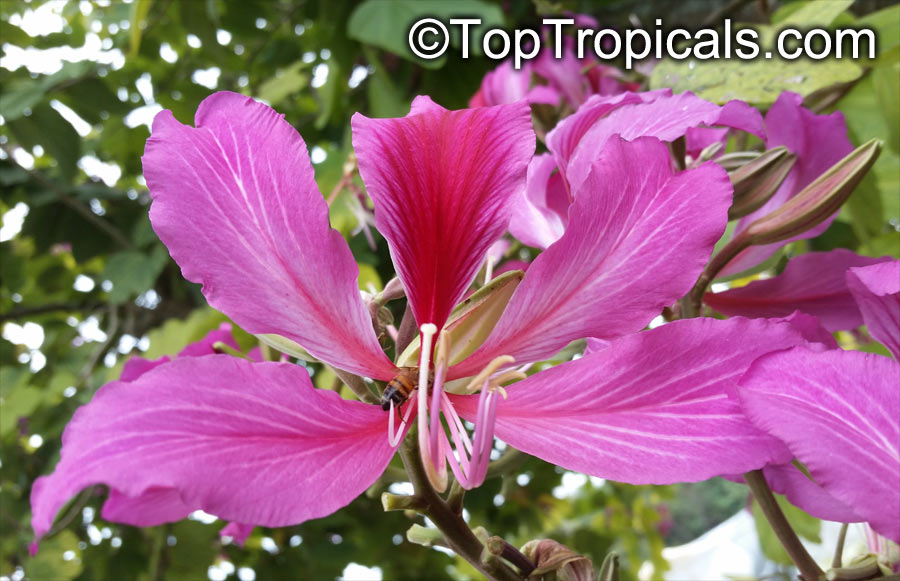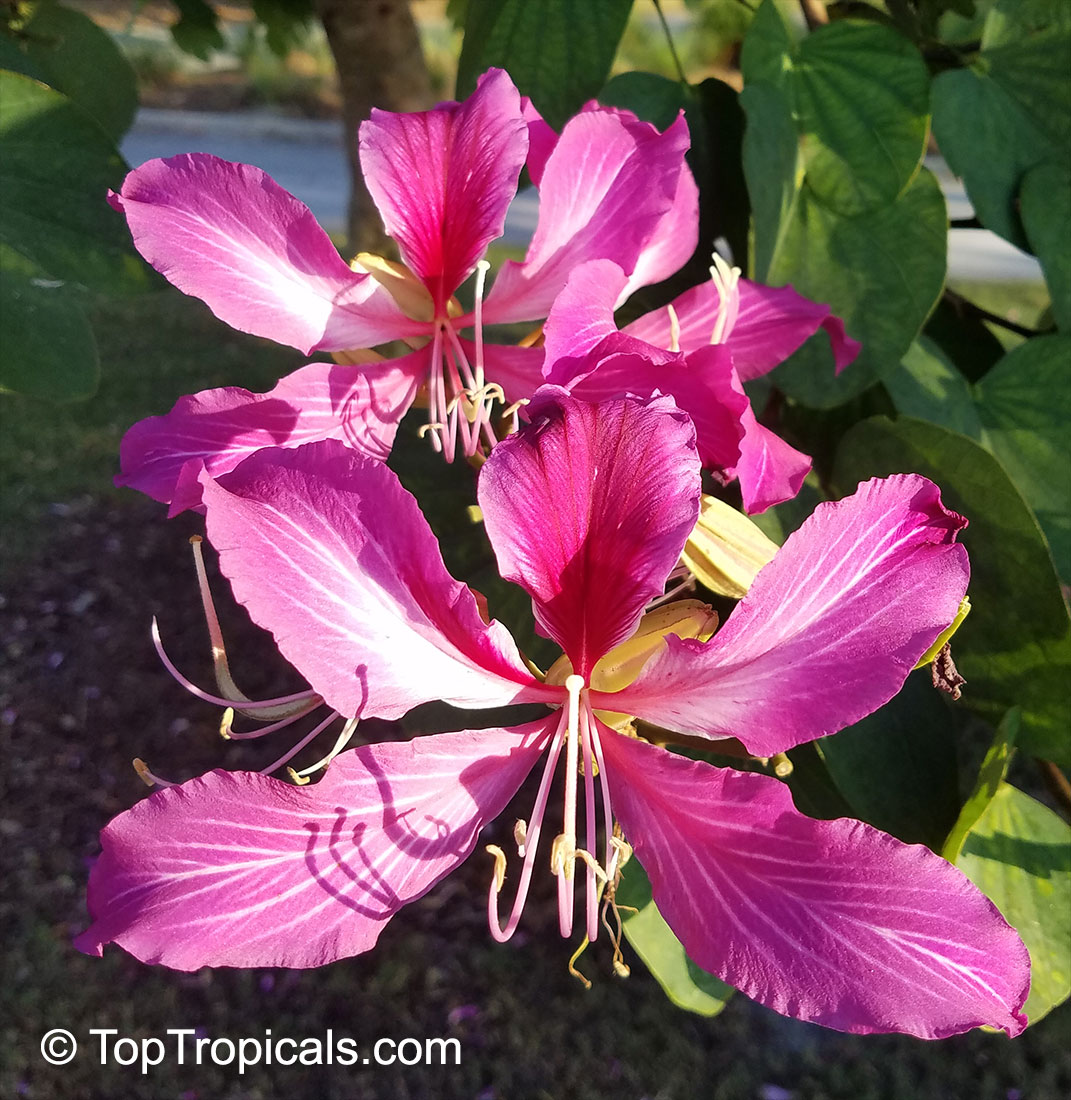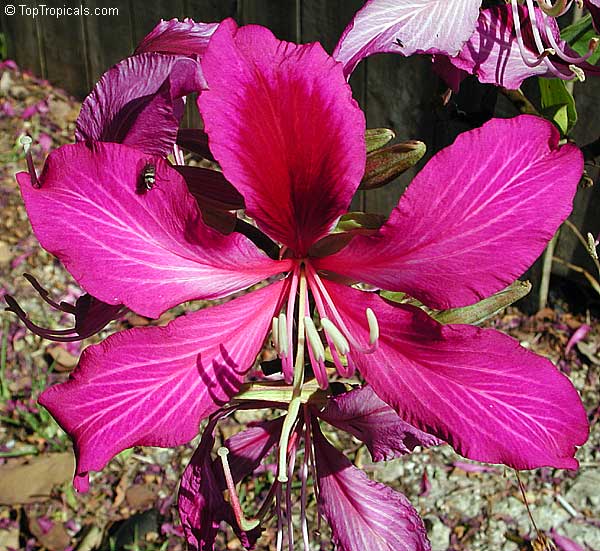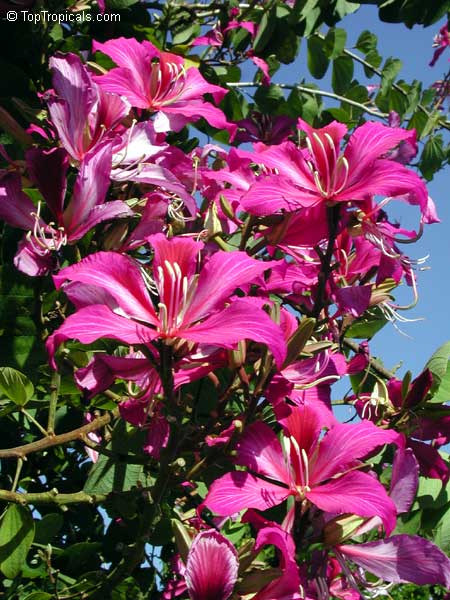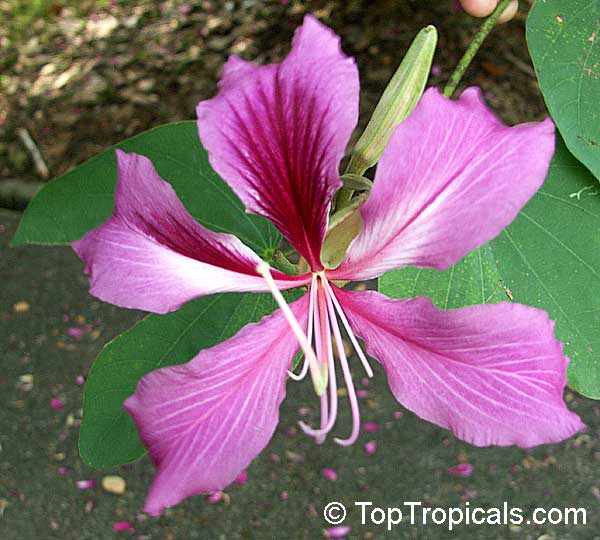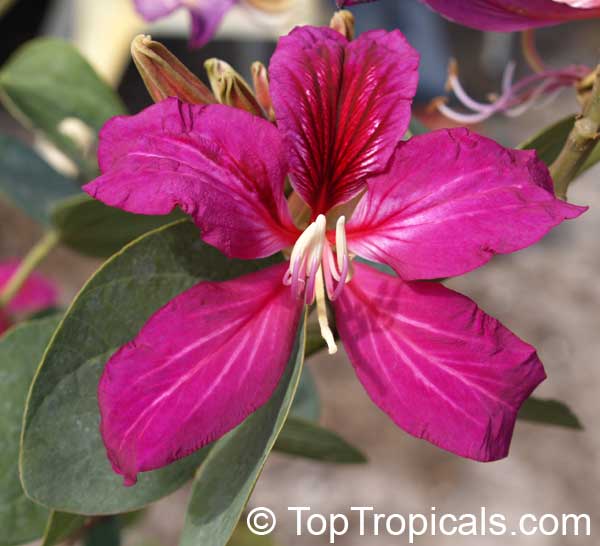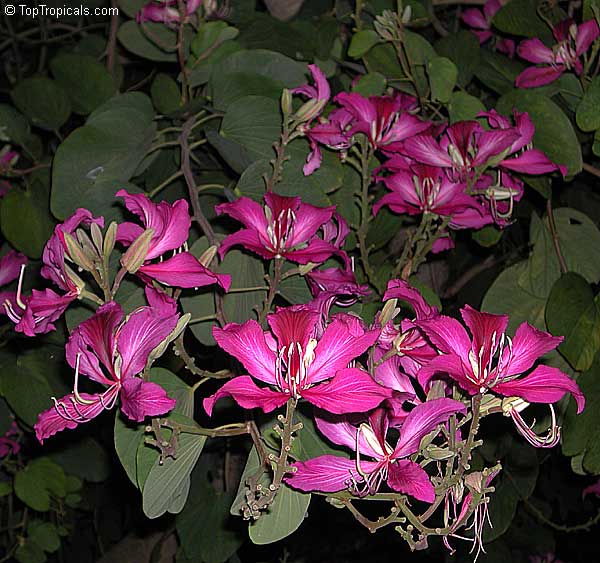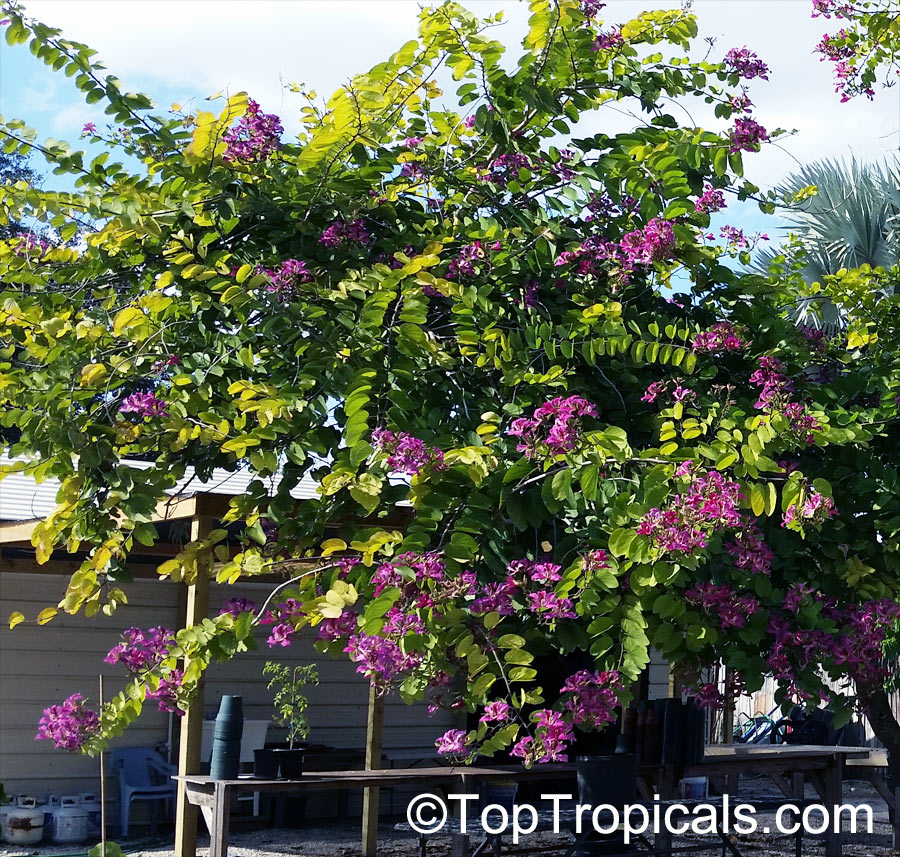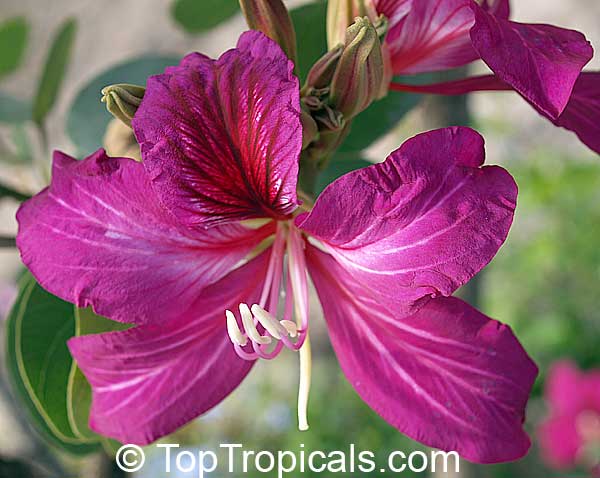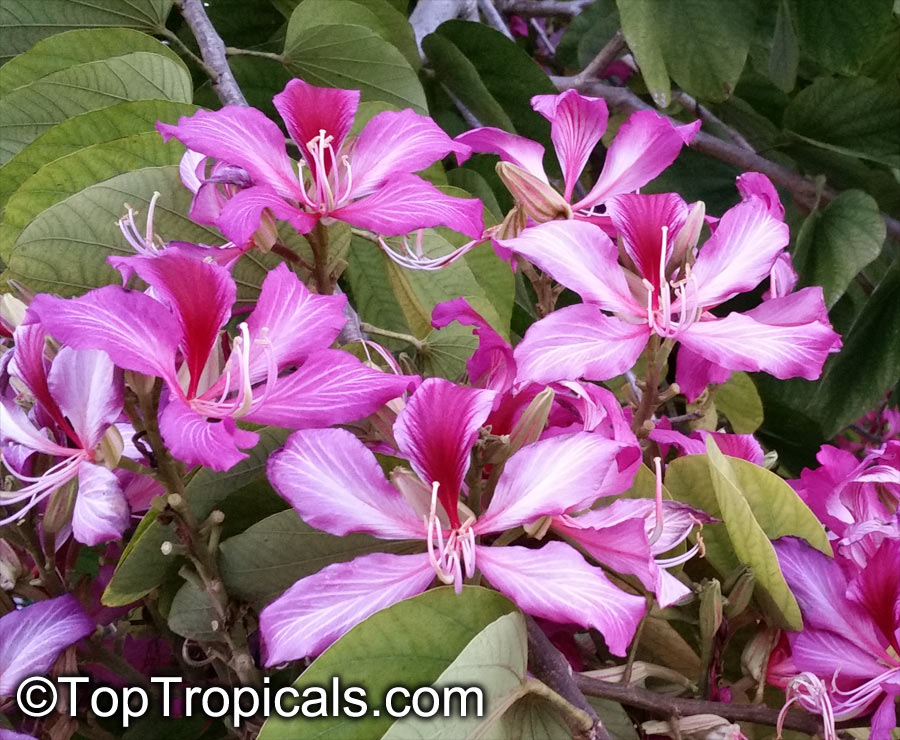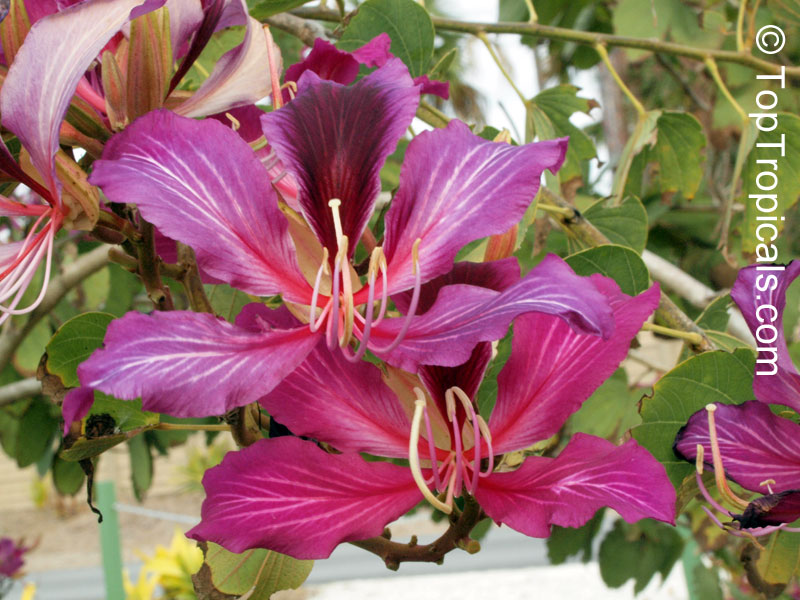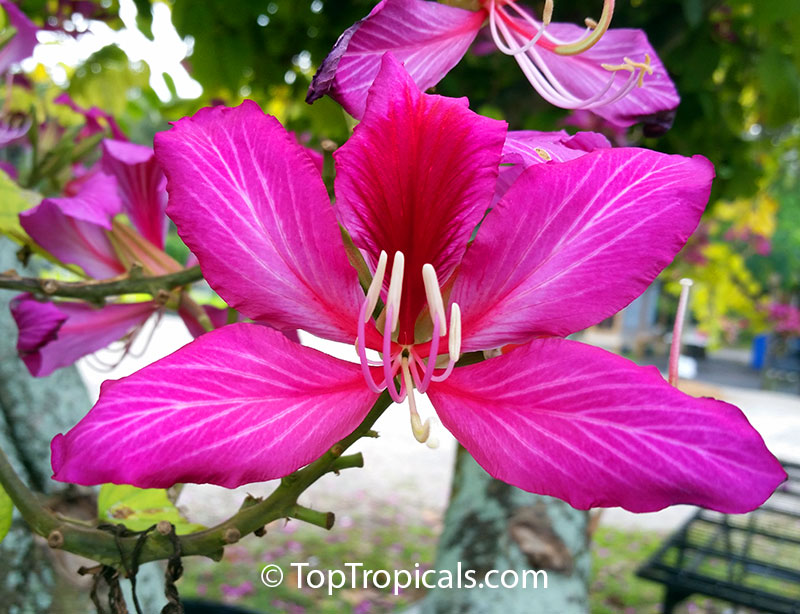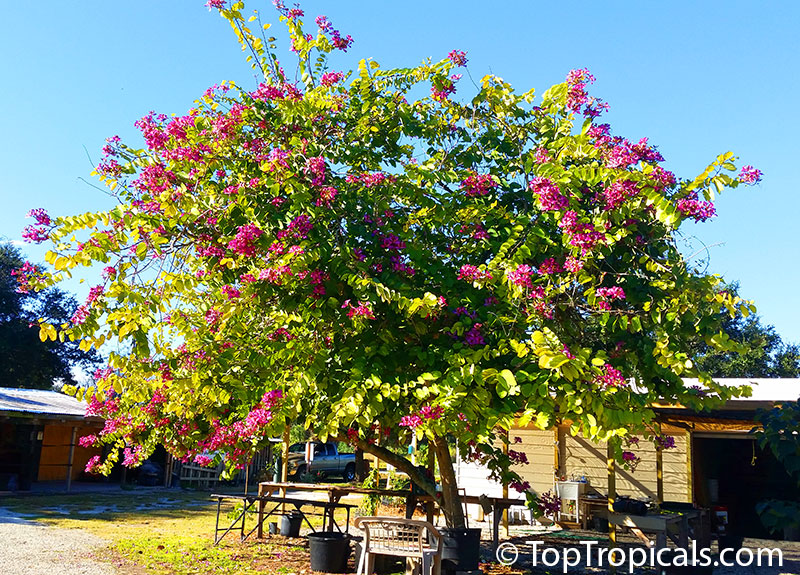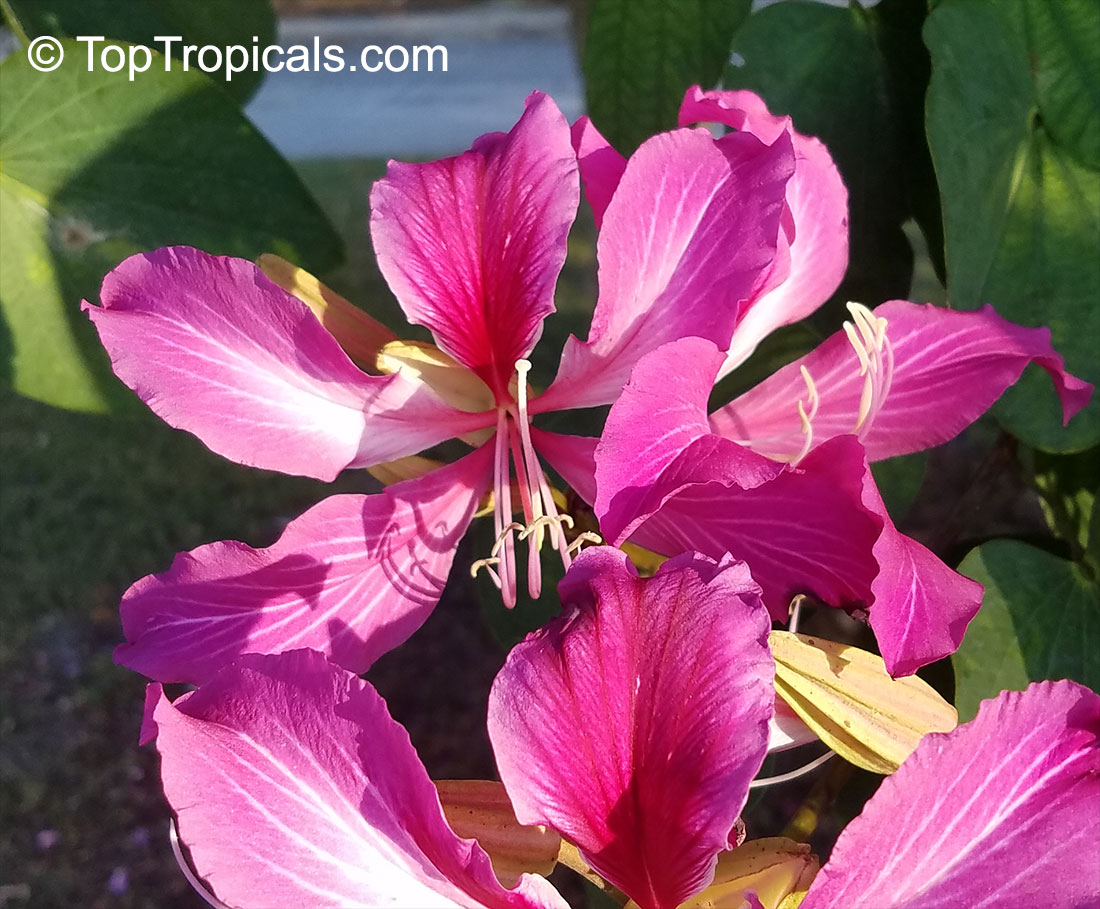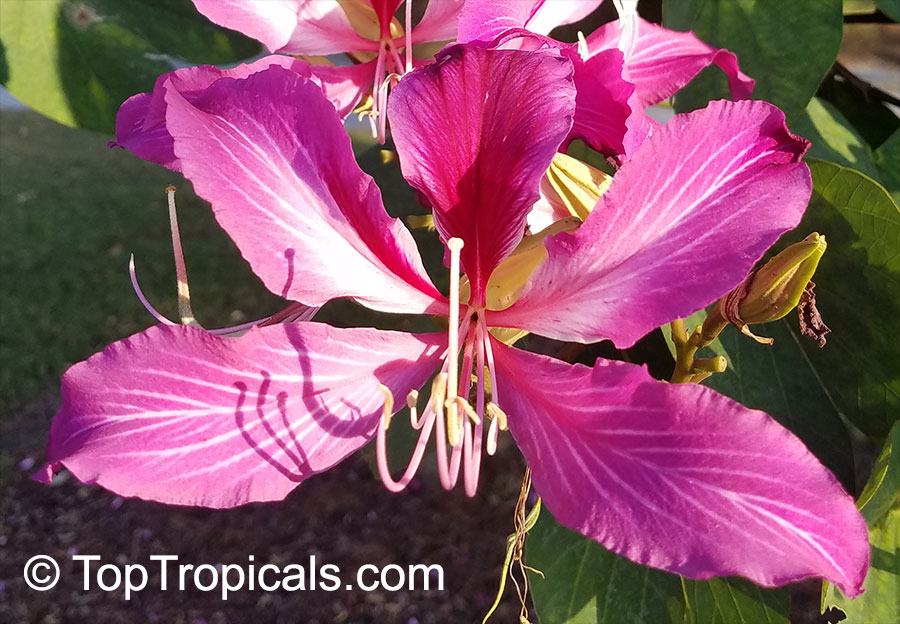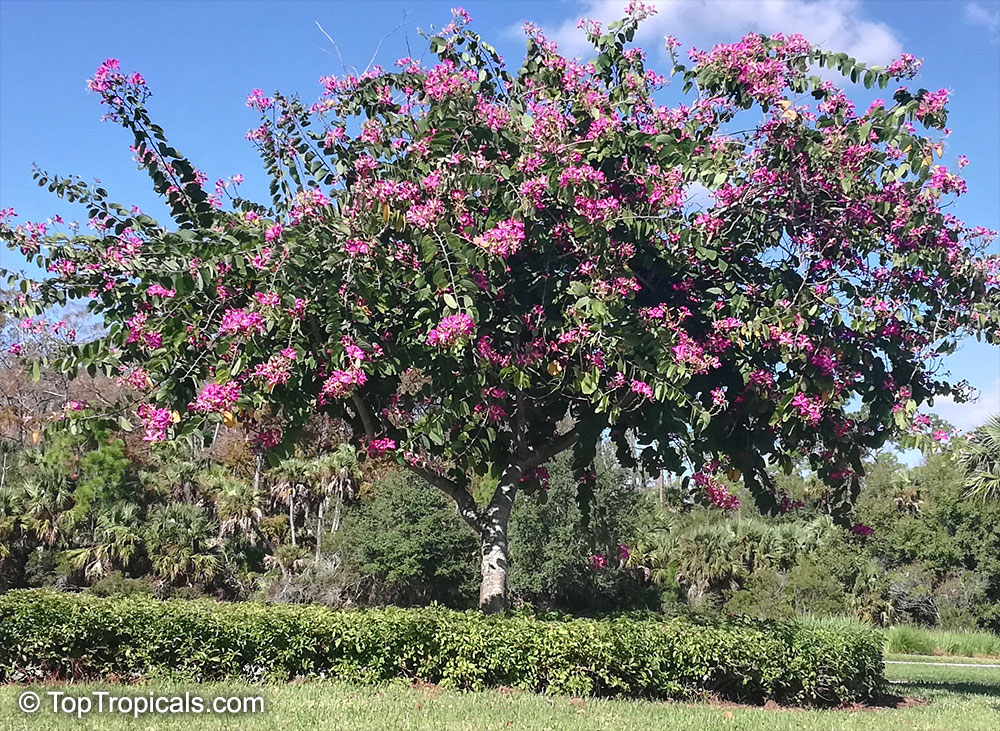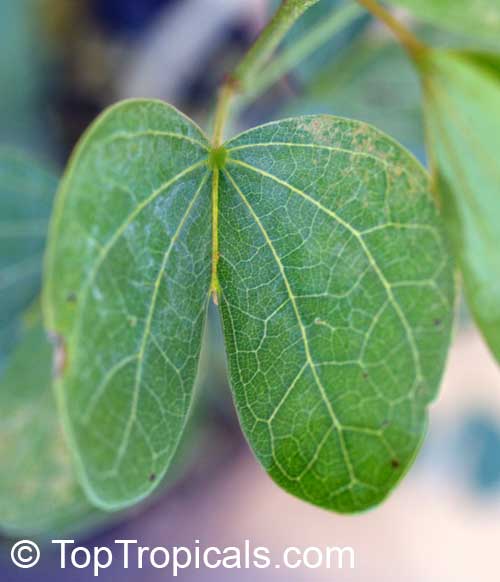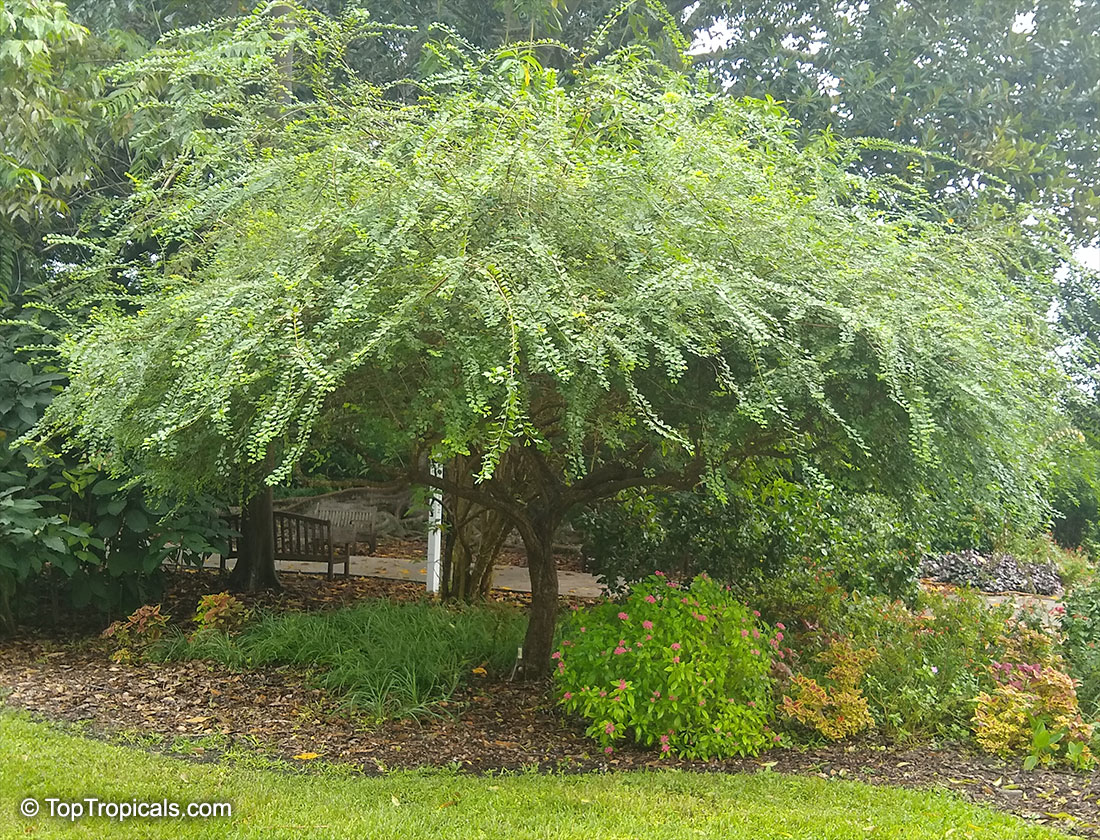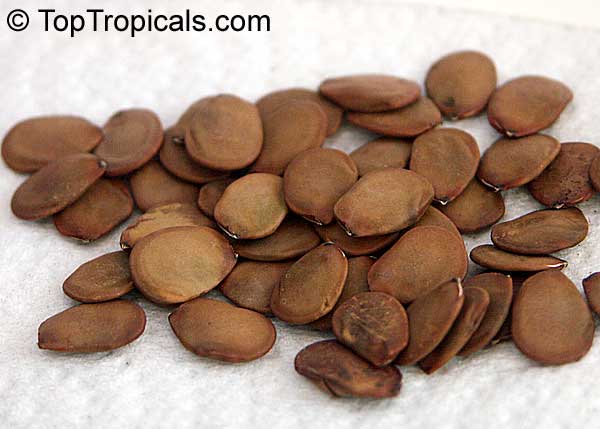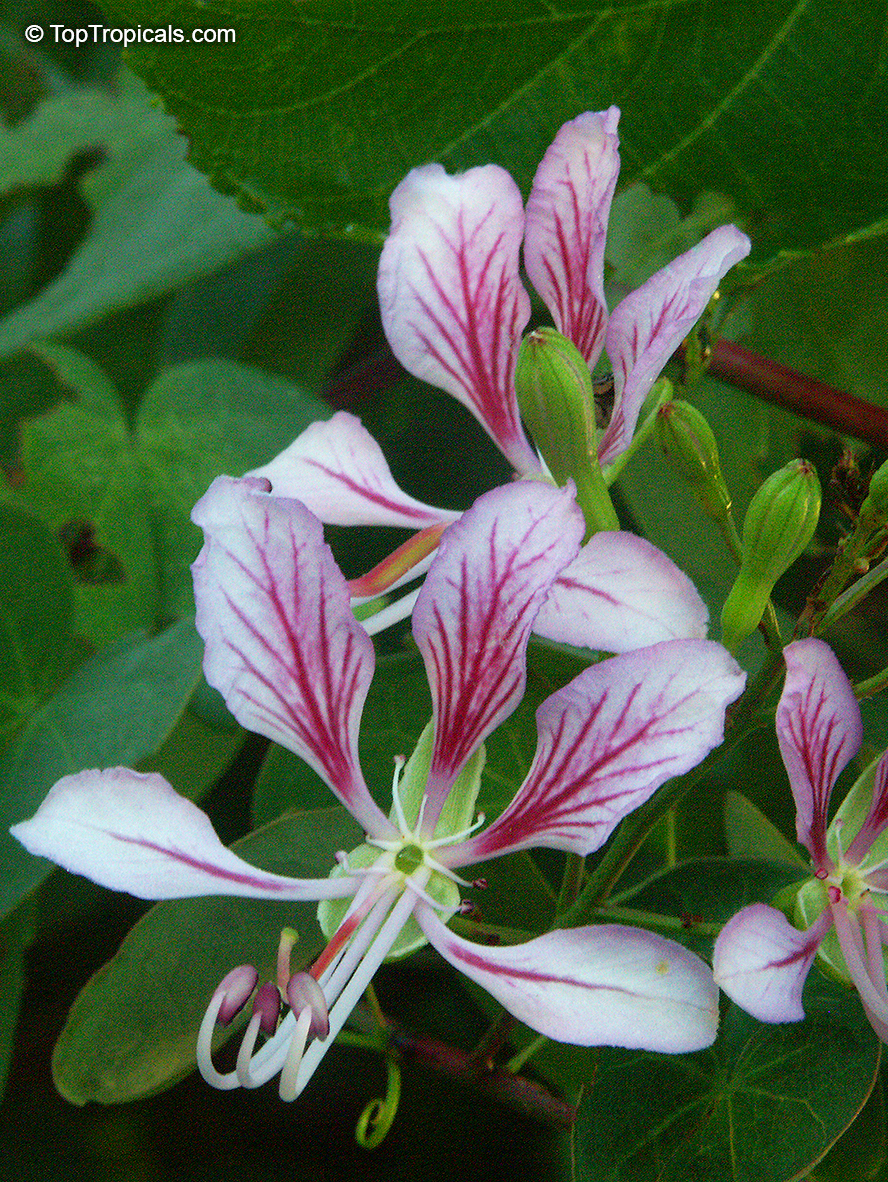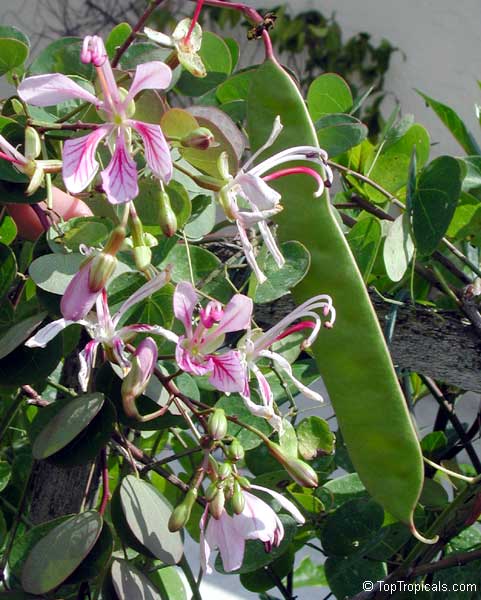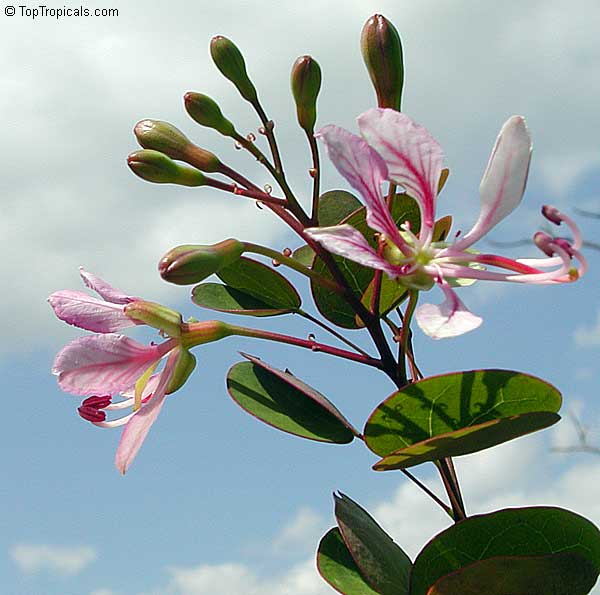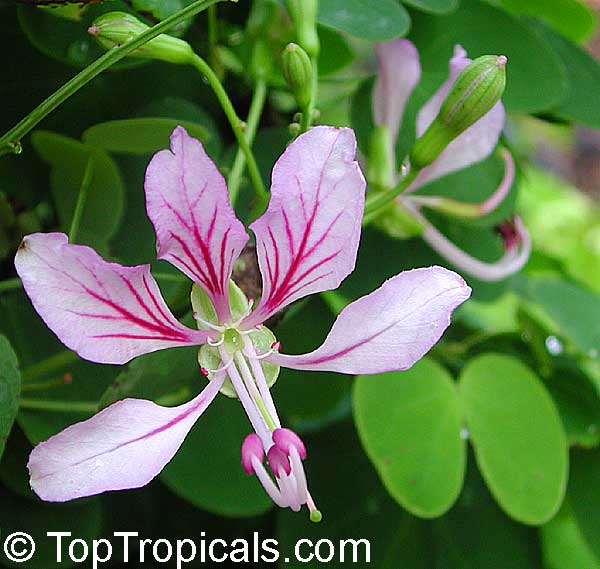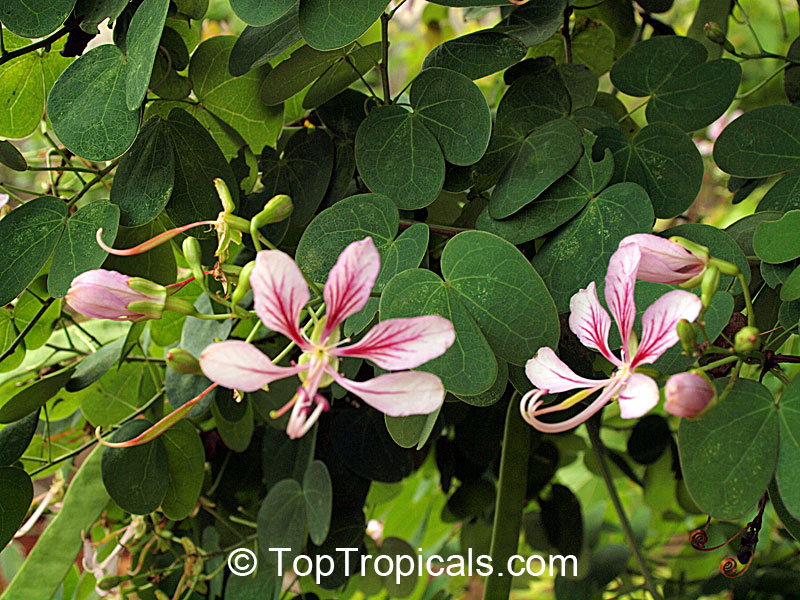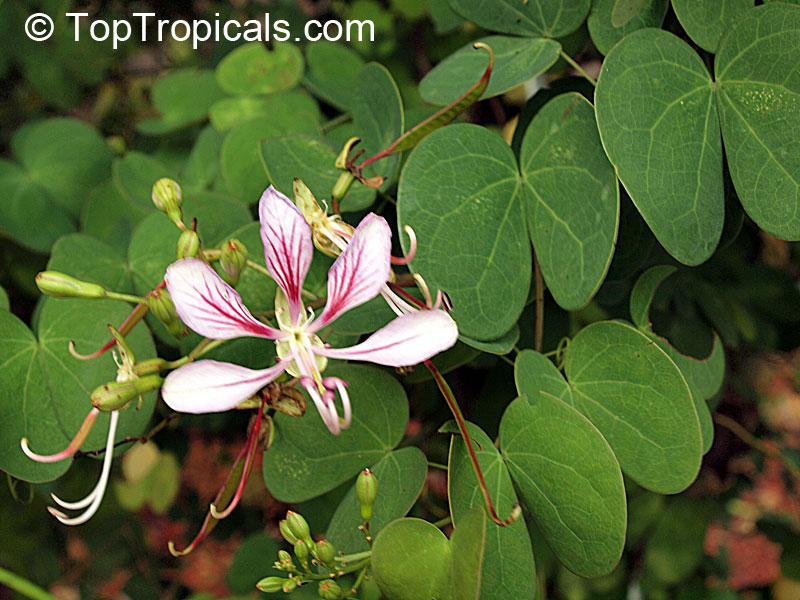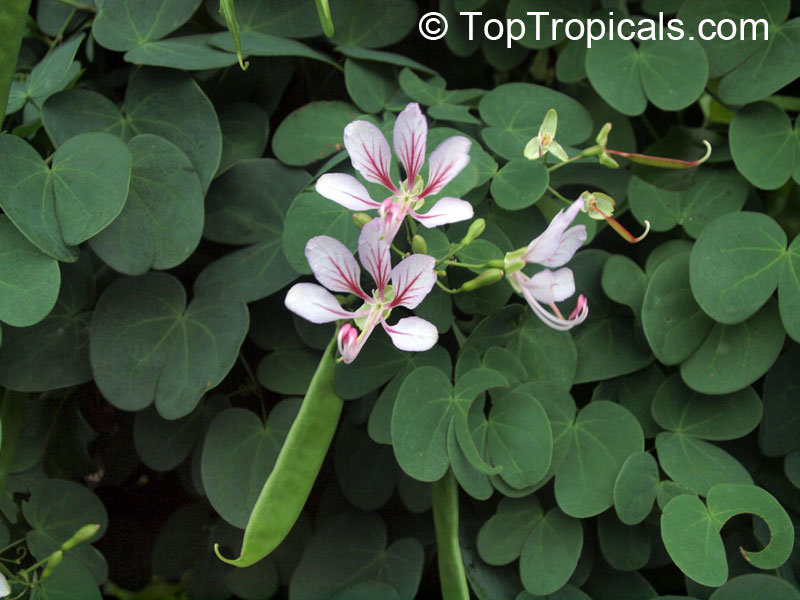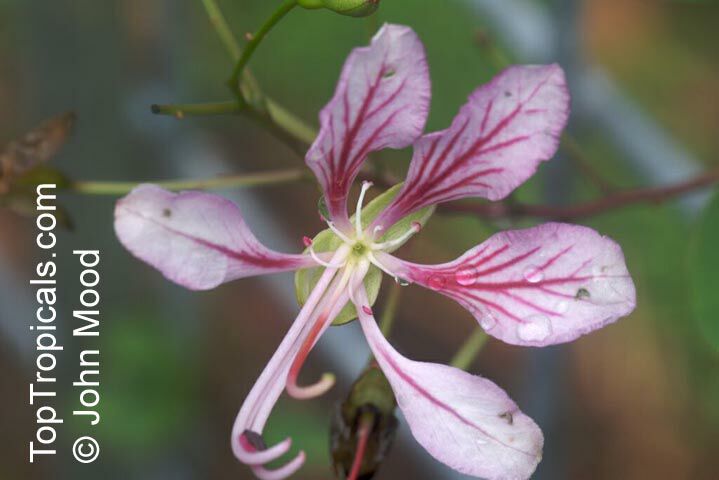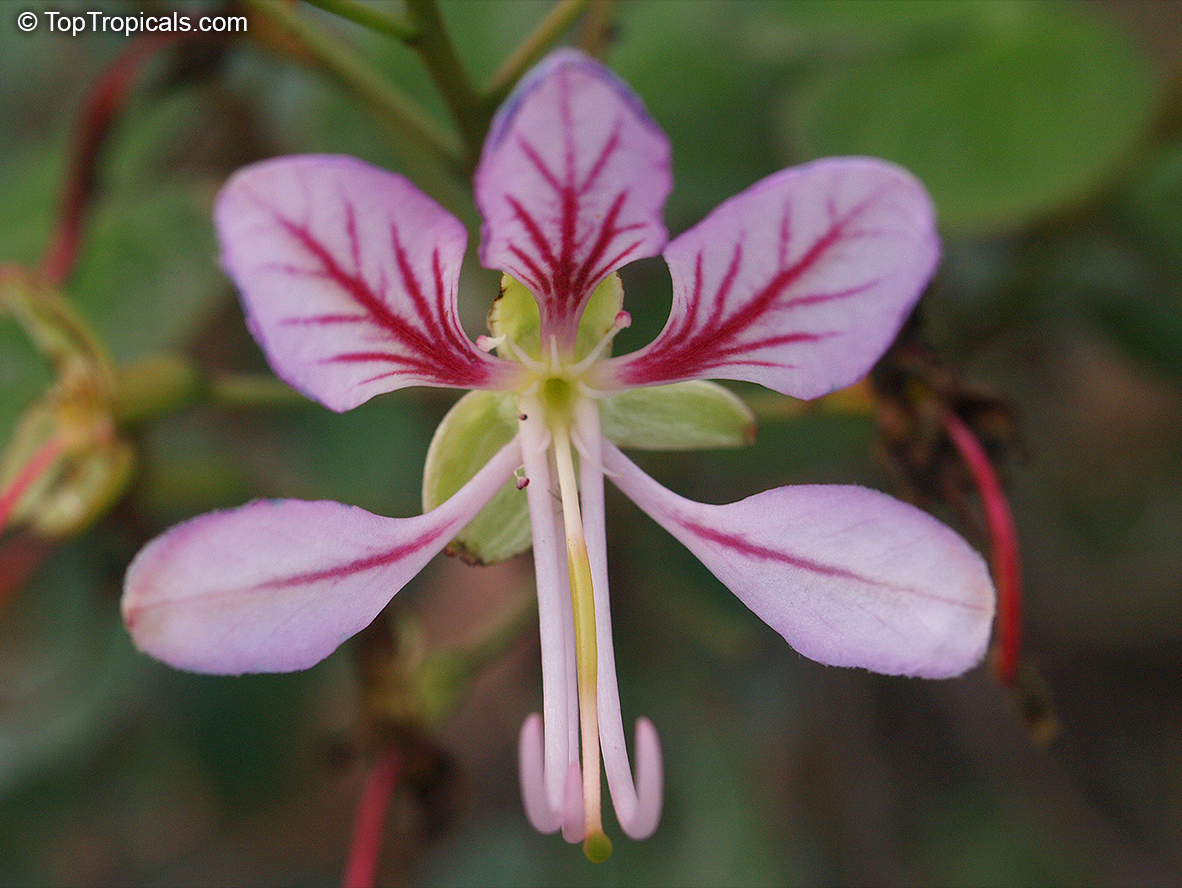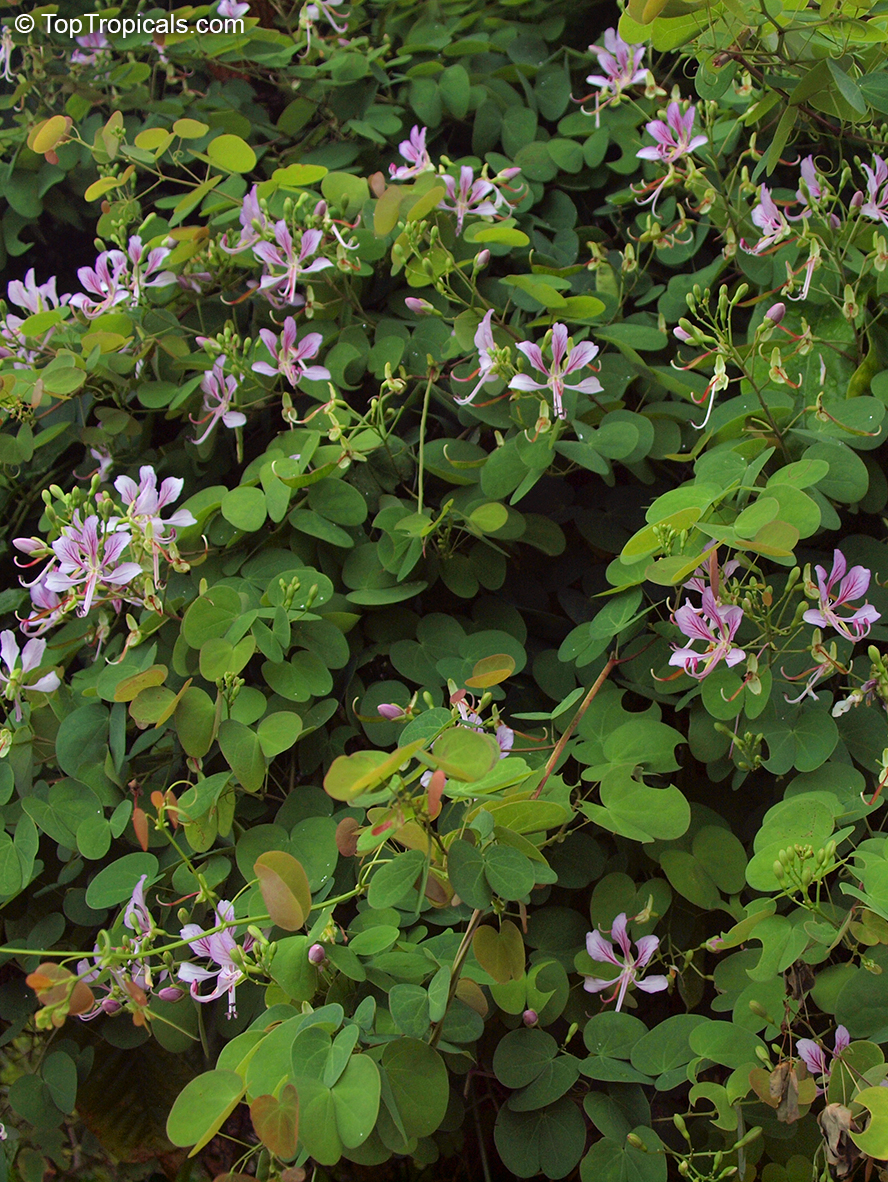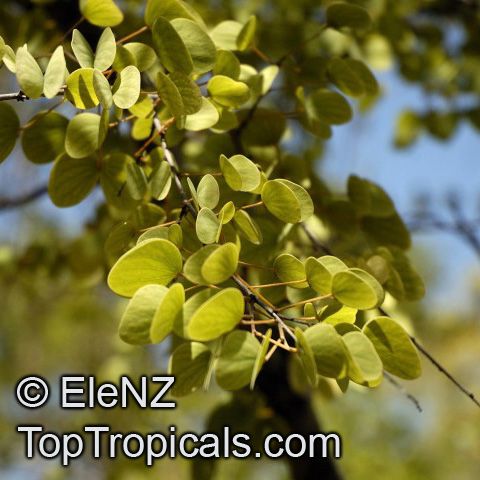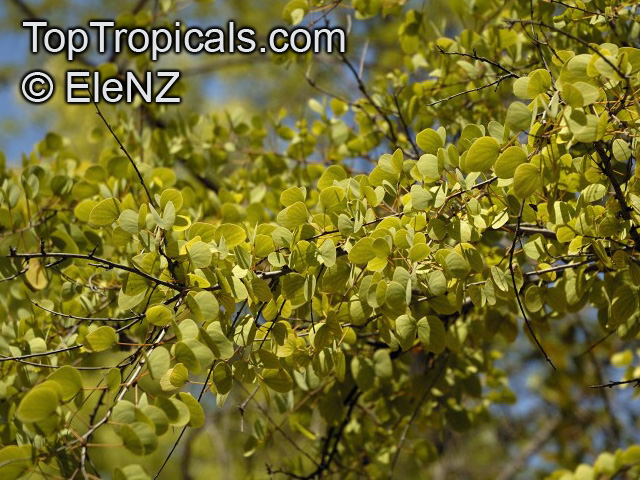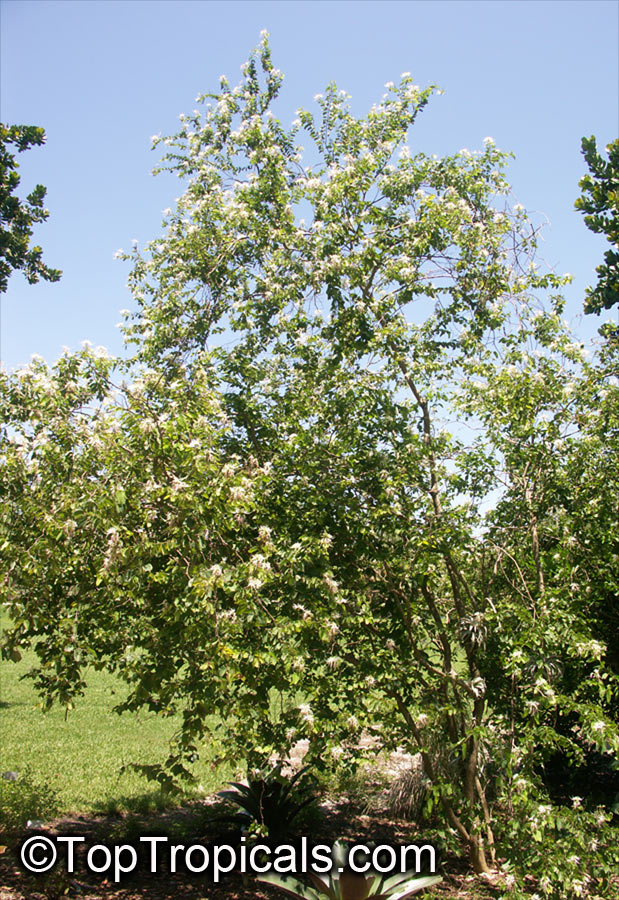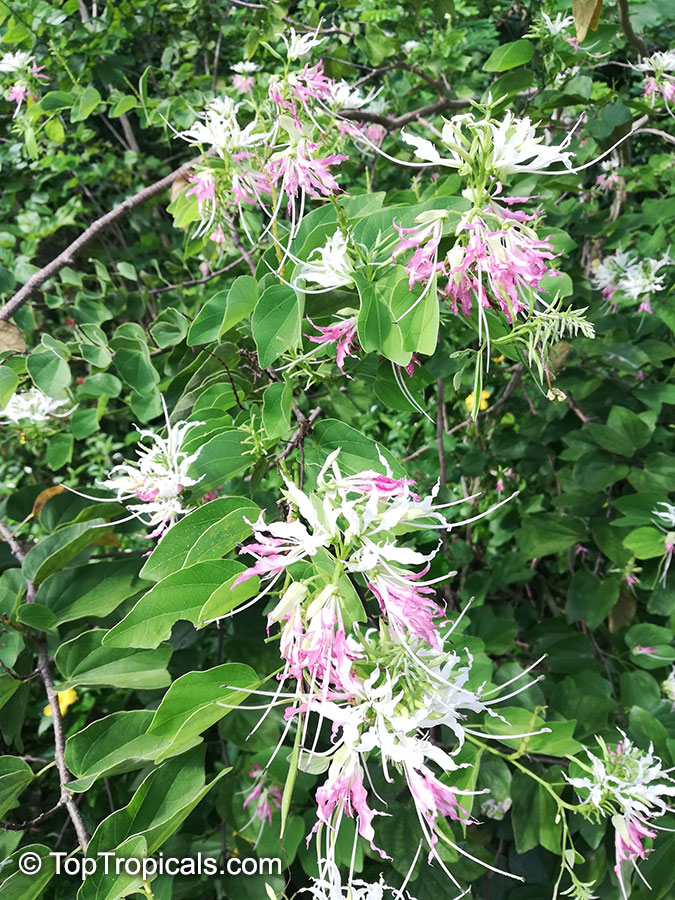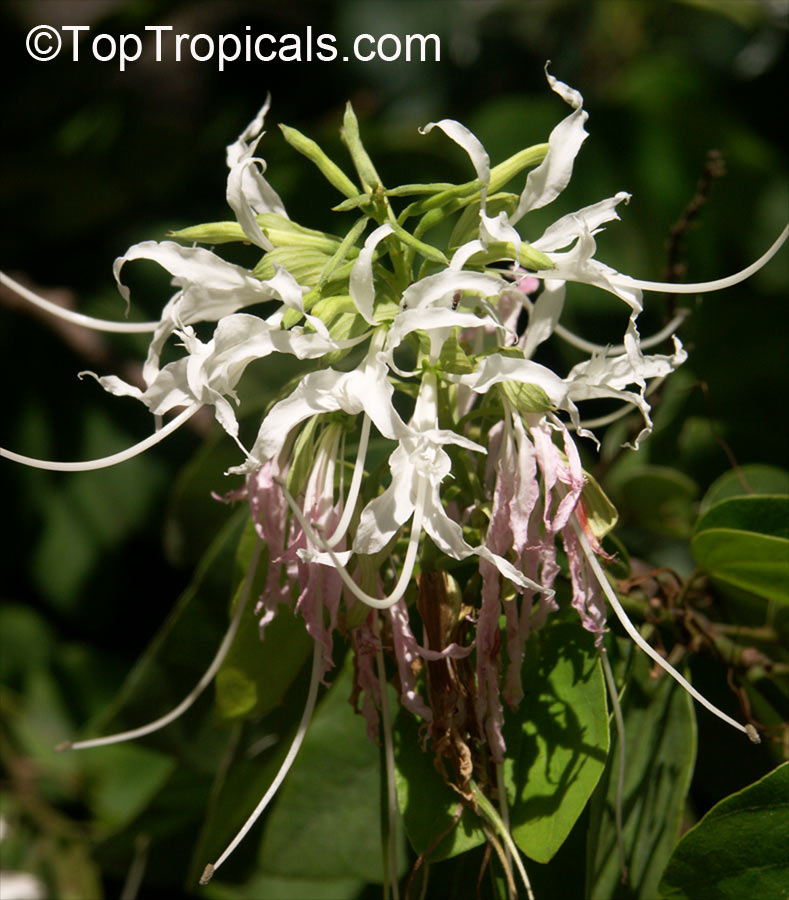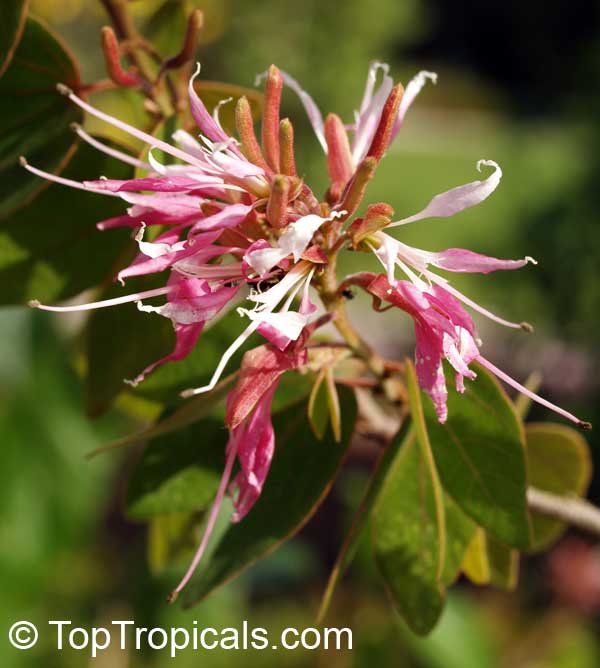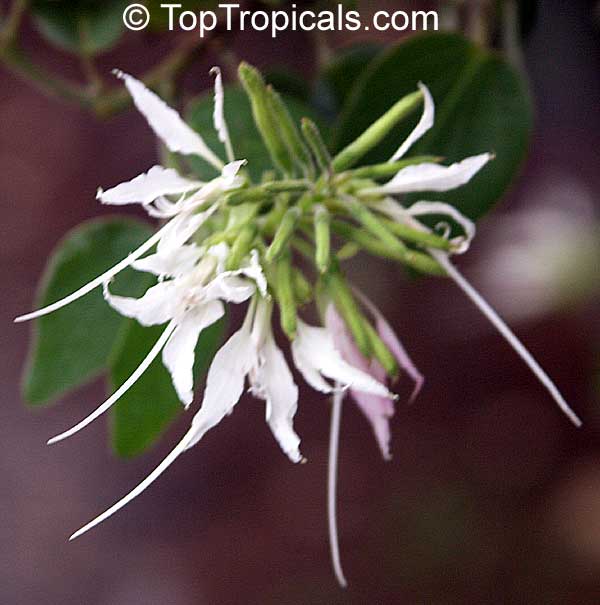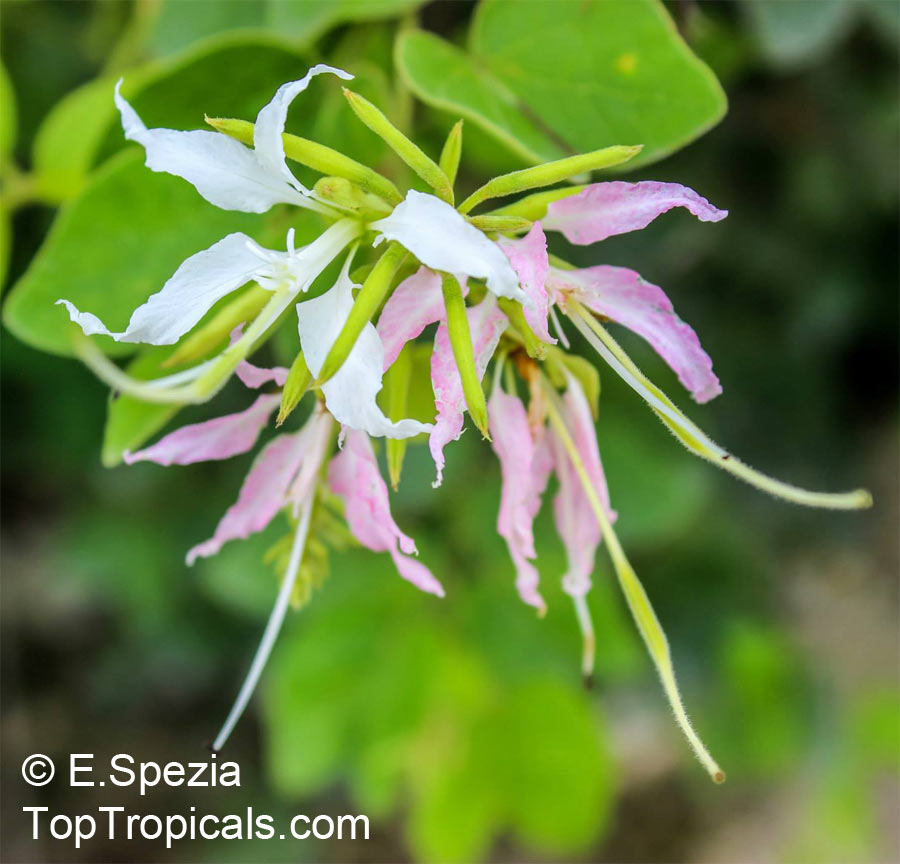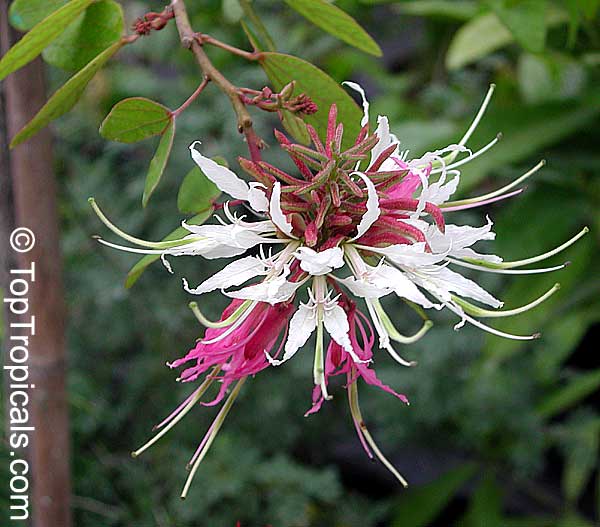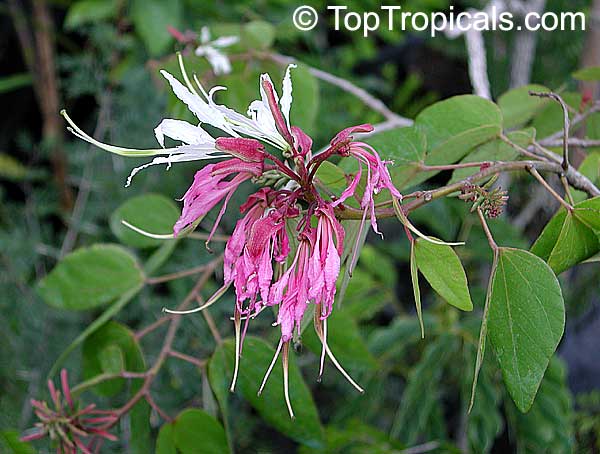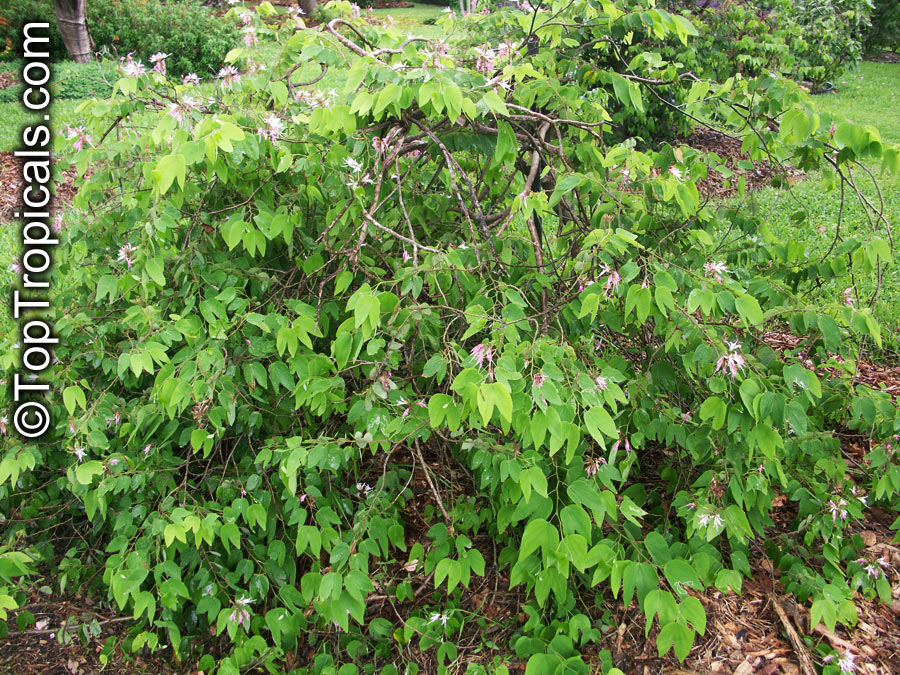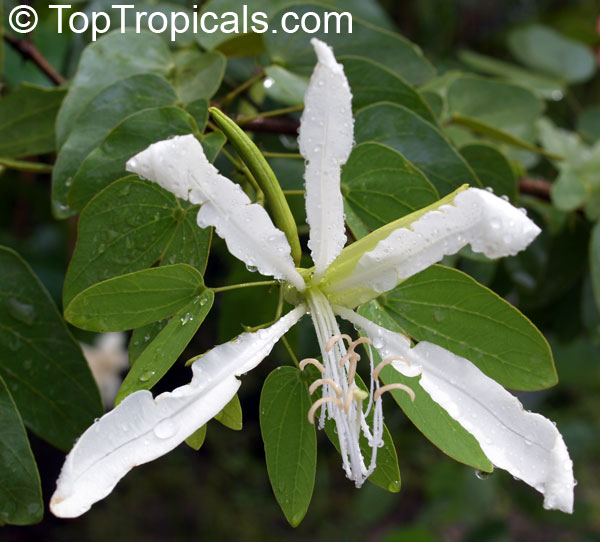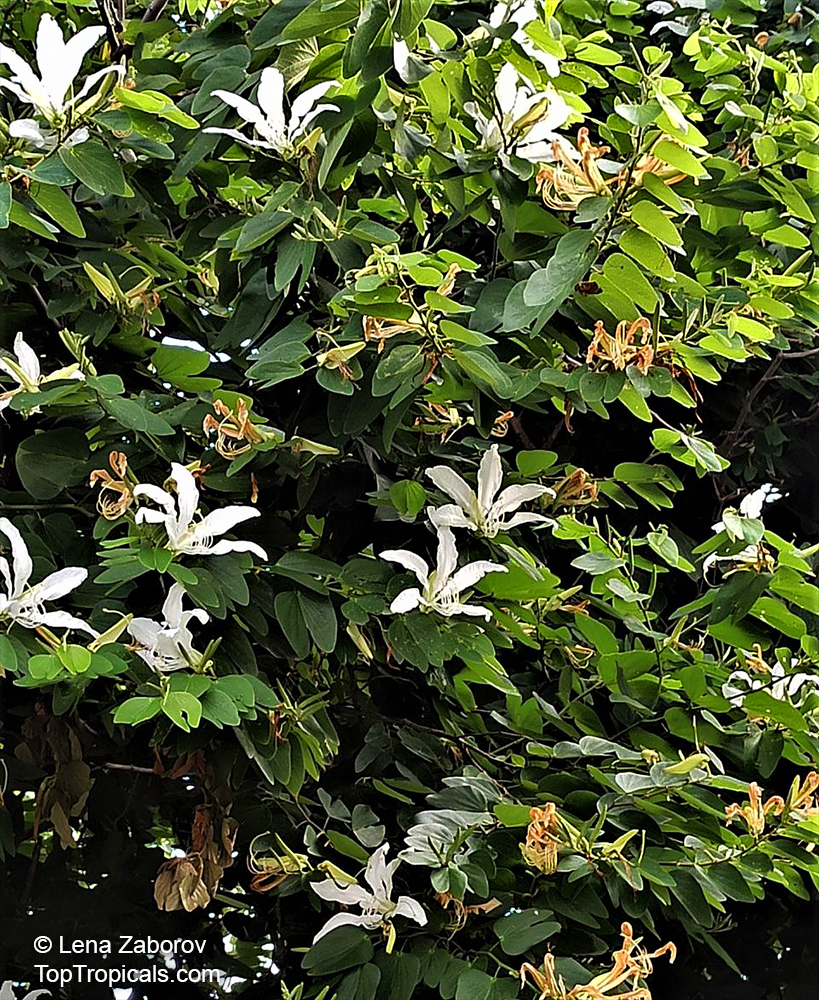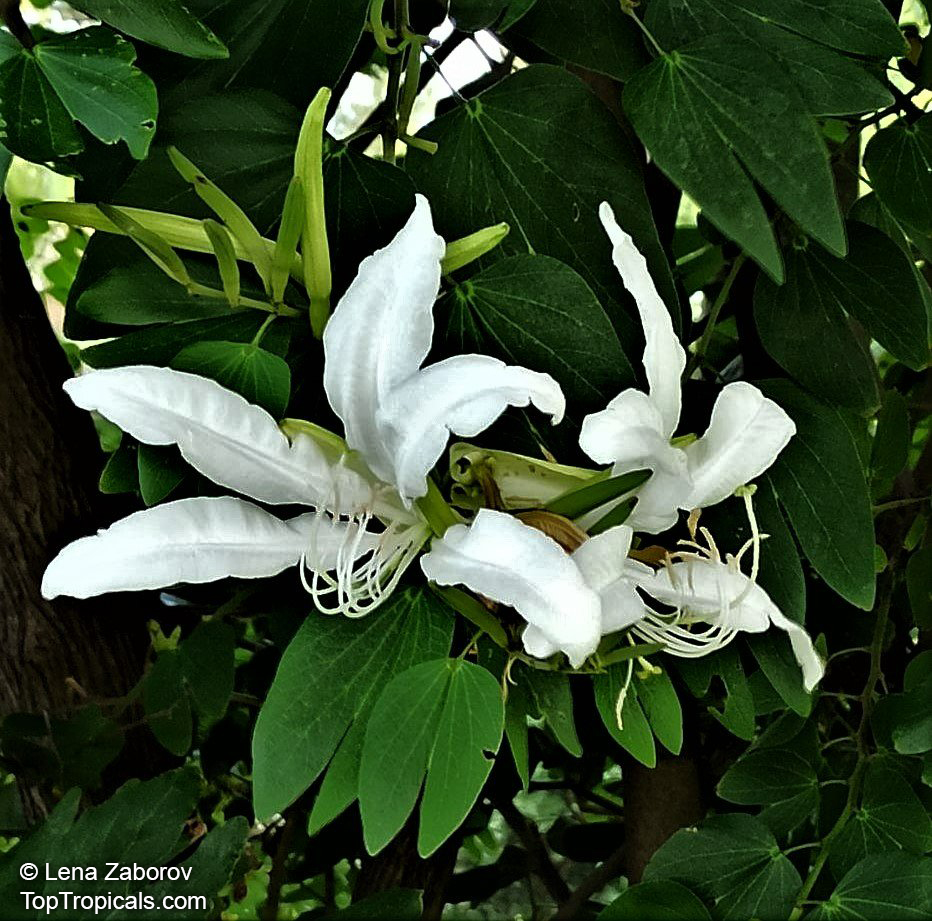Bauhinia - Plant Encyclopedia Results
Top Tropicals Plant Encyclopedia
| Number of plants found: 36 | Next | 
|
Go to page: | 1 | 2 | 3 | 4 |
Botanical name: Bauhinia acuminata
Common names: Dwarf White Orchid Tree, White Bauhinia, Kaa-long, Snowy Orchid
Family: Fabaceae
Subfamily: Caesalpinioideae
Origin: Malaysia, now widely cultivated in the Asian tropics






Semi-deciduous large shrub or small tree with white butterfly-like flowers, everblooming (Flower season: Spring through fall). Drought tolerant. Bauhinia acuminata is very sensitive to cold wind. Pea shaped pod with 4 to 6 seeds. See article about this plant.
Recommended Fertilizer: SUNSHINE Megaflor - Bloom Nutrition Booster
Botanical name: Bauhinia aureifolia
Common names: Gold Leaf Bauhinia, Bai Mai Si Thong
Family: Fabaceae
Subfamily: Caesalpinioideae
Origin: Thailand






B. aureifolia, which was discovered in Thailand in 1983: a beautiful climber that needs full light and good humidity. The cultivated plants range from pure white to dark purple and pink, while the wild ones have often white petals with pinkish patches. This plant prefers dry to intermediate sites in any altitude range from sea level. Delicately fragrant in the evening, blooms May to November at 3-5 years old in any well drained soil with full light. Watch red spider mites and borers. Propagation by seeds from seed cases that have turned brown, also by cuttings and layering. Good branching.
See the article about Gold Leaf Bauhinia.
Botanical names: Bauhinia bassacensis, Phanera bassacensis
Common name: Bauhinia
Family: Fabaceae
Subfamily: Caesalpinioideae
Origin: SE Asia





Unusual vining bauhinia with large leaves and white large flowers. Tropical plant, very cold sensitive. Needs support. The plant grows as a large woody vine.
Botanical names: Bauhinia bidentata, Phanera bidentata
Common names: Orange Bauhinia, Orange Orchid Vine
Family: Fabaceae
Subfamily: Caesalpinioideae
Origin: Thailand







Bauhinia bidentata, native to Thailand, is a vigorous woody vine, or creeper, with attractive bright orange flowers and large heart-shaped foliage. The yellow, orange and crimson blossoms of this plant attract butterflies and hummingbirds.
Due to its tropical origins, Bauhinia bidentata thrives in full sun and semi-shade, although young plants should be protected during cold spells. Restrict moderate watering during winter and late autumn. This plant requires moist, well-drained soils.
In warmer climates, Bauhinia bidentata can be grown in the garden. In USDA Zone 10-11 it can reach 30-50 ft high. In colder climates, you can grow Orange Bauhinia in a pot, using a rich, fast-draining planting mix. It is important to keep the container in an area that provides shelter from strong winds, and also to make sure that planting mix is kept moist but not saturated.
Overall, Bauhinia bidentata is an excellent vine to bring a tropical feel to any outdoor space. It is a low maintenance plant with unique orange-colored blooms that you can enjoy all year-round.
Botanical name: Bauhinia blakeana
Common name: Hong Kong Orchid Tree
Family: Fabaceae
Subfamily: Caesalpinioideae
Origin: Hong Kong








The most beautiful orchid tree. The tree was originally described as a new species in 1908 after being discovered on the near Hong Kong around 1880 and was named after a Hong Kong governor Sir Henry Blake who had a strong interest in botany. The tree is of medium size with alternate large heart shaped leaves. Large deep-purple flowers appears from January to May. The beautiful display of slightly fragrant orchid-like blooms makes the tree so desirable for the landscape. The flowers attract butterflies and bees. The species is believed to be sterile and will not set seed so the plant will not drop long pods as other orchid trees do. The flower of Bauhinia blakeana was adopted as the emblem of Hong Kong in 1965.
See Article about Bauhinia blakeana.
See video about Hong Kong Orchid Tree
Learn more: Bauhinias: trees with Orchid Flowers and Butterfly Wings
Recommended Fertilizer: SUNSHINE Megaflor - Bloom Nutrition Booster
This item can not be shipped. Pick up only. We can provide local delivery around Ft. Myers or Sebring, Florida. Contact us for an estimate. Non-pickup orders are subject to restocking fees.
Last one
Recommended Fertilizer: SUNSHINE Megaflor - Bloom Nutrition Booster
Botanical name: Bauhinia bowkeri
Common names: Kei White Bauhinia, Bowker's Bauhinia, Keibeesklou
Family: Fabaceae
Subfamily: Caesalpinioideae
Origin: South Africa





Bauhinia bowkeri is widely cultivated due to its attractive foliage and white and off-white flowers which are abundant during warmer weather and attracts butterflies, hummingbirds and other pollinators. It is hardy in the warmer regions of USDA hardiness Zones 9-11 and can be grown as an evergreen in tropical, subtropical and warm temperate climates. It does not tolerate cold, and in areas where the temperature drops below freezing, it should be grown in containers and kept in an area that receives full sun and moderate water during the growing season.
When grown in a pot, Bauhinia bowkeri should be placed in an area that receives full sun. The soil should be kept slightly moist and well-draining, to prevent root rot. During frost and cold temperatures, it should be moved into a warm, sheltered location and covered with a thick blanket to insulate it. The mature plant can tolerate temperatures in the low 30s F for a short time. Also, being grown in a container also helps insulate the roots and protect them from freezing temperatures. It should not receive too much water during cold weather, so as to minimize root damage.
With its large, evergreen shrub and attractive foliage, Bauhinia bowkeri is an excellent addition to tropical, subtropical and warm temperate gardens. It is a low maintenance plant and offers year round color and beauty. The white and off-white flowers attract a wide range of pollinators, from butterflies to hummingbirds, and are a remarkable sight.Ultimately, Bauhinia bowkeri is a low maintenance yet beautiful addition to any garden in a warm climate.
Botanical names: Bauhinia corymbosa, Phanera corymbosa
Common names: Vining bauhinia, Climbing Bauhinia, Camel's foot
Family: Fabaceae
Subfamily: Caesalpinioideae
Origin: Southeast Asia










Pretty, evergreen vine climbing by tendrils w/ dainty, bilobed leaves and clusters of lavender-pink, orchid-like flowers over long spring-fall season, displayed for a long period. It's a delicate, small-leaved but vigorous viner, adaptable to sun or light shade, and tolerates drought and light frost (zone 9). It has the characteristic Bauhinia butterfly leaves. A fine texture vine.
Botanical names: Bauhinia cunninghamii, Lysiphyllum cunninghamii
Common names: Jigal Tree, Kimberley Bauhinia
Family: Fabaceae
Subfamily: Caesalpinioideae
Origin: Australia





Botanical name: Bauhinia divaricata
Common name: Butterfly Orchid Tree
Family: Fabaceae
Subfamily: Caesalpinioideae
Origin: Central America







A beautiful, small tree with small pink and white flowers. Ideal for spaces where they can be observed and appreciated up close.
Botanical names: Bauhinia forficata, Bauhinia candicans
Common names: Pata de Vaca, Brazilian Orchid Tree
Family: Fabaceae
Subfamily: Caesalpinioideae
Origin: South America







This small tree, which has many other names, including weak-leaved orchid tree and Brazilian orchid, can be found growing naturally in warm climates across South America, including Argentina, Bolivia, Peru, Paraguay, and Uruguay. It typically grows to a height of 10-20 feet, with a thick, fleshy trunk and a wide, flat crown.
This native, ethnomedical plant is a great choice for gardeners looking to attract hummingbirds and butterflies. It produces fragrant, off-white to white flowers, which are five-petaled and bloom in the late summer months.
For those looking to grow Bauhinia forficata in their garden, it is important to ensure that it receives plenty of direct sunlight and regular waterings. This drought and heat tolerant species thrives in moist soils and is suitable for growing in USDA Zone 9-11.
In colder regions, Bauhinia forficata can be grown in a large pot and brought outside during the warmer months. For optimal growth, the plant should be potted in a well-draining soil mix and placed in a sunny area with plenty of air circulation. In the winter, the plant should be brought inside and kept in a bright area. Make sure to water the plant regularly, but do not overwater. Apply fertilizer during the growing season to promote optimal growth.
| Next |  |
Use link to repeat this search:
https://toptropicals.com/cgi-bin/garden_catalog/cat.cgi?find=Bauhinia&search_op=and&keyword_op=and&language=e&number=10
&no_change_lang=1&user=tt&sale=1&first=0
